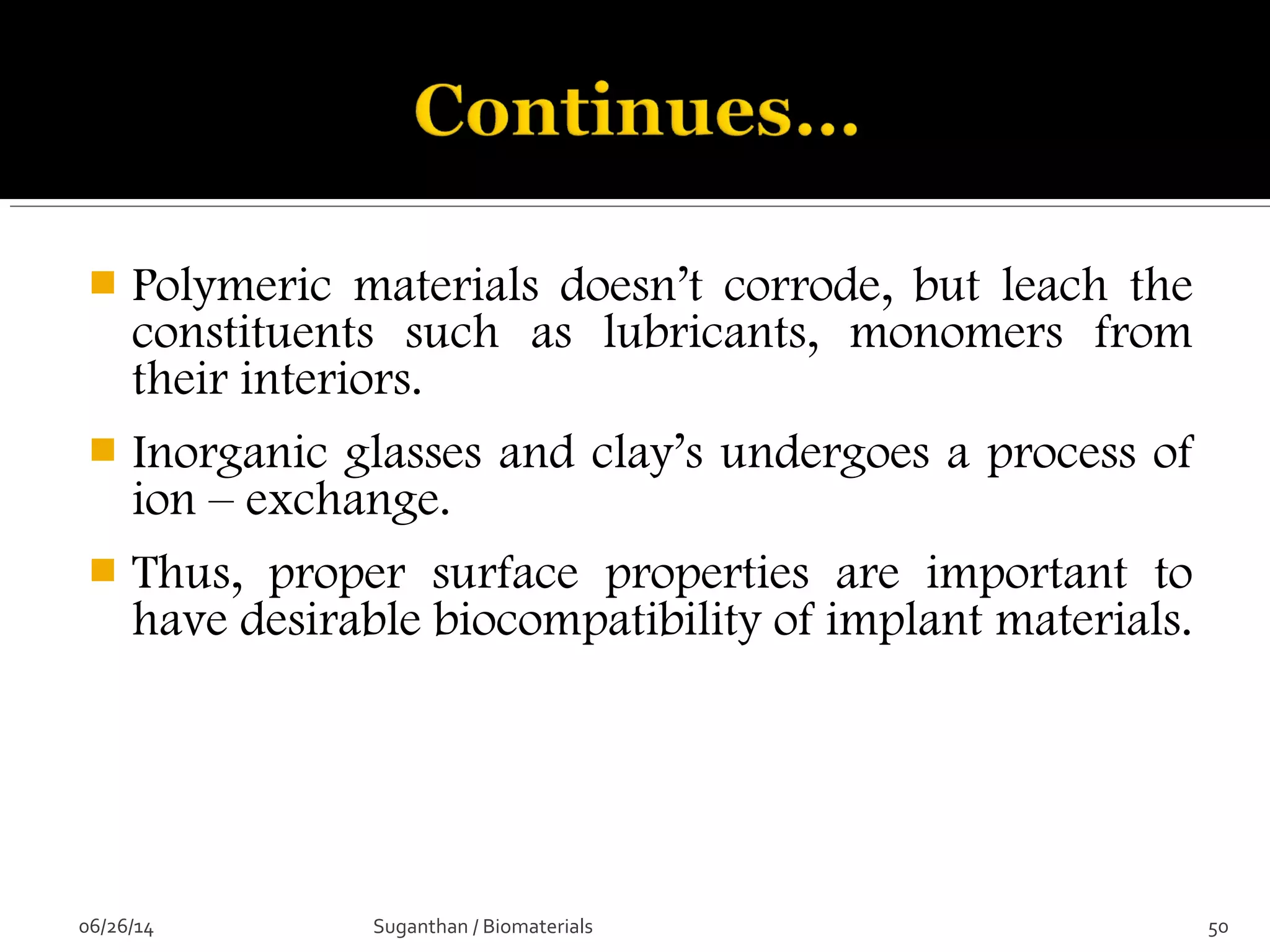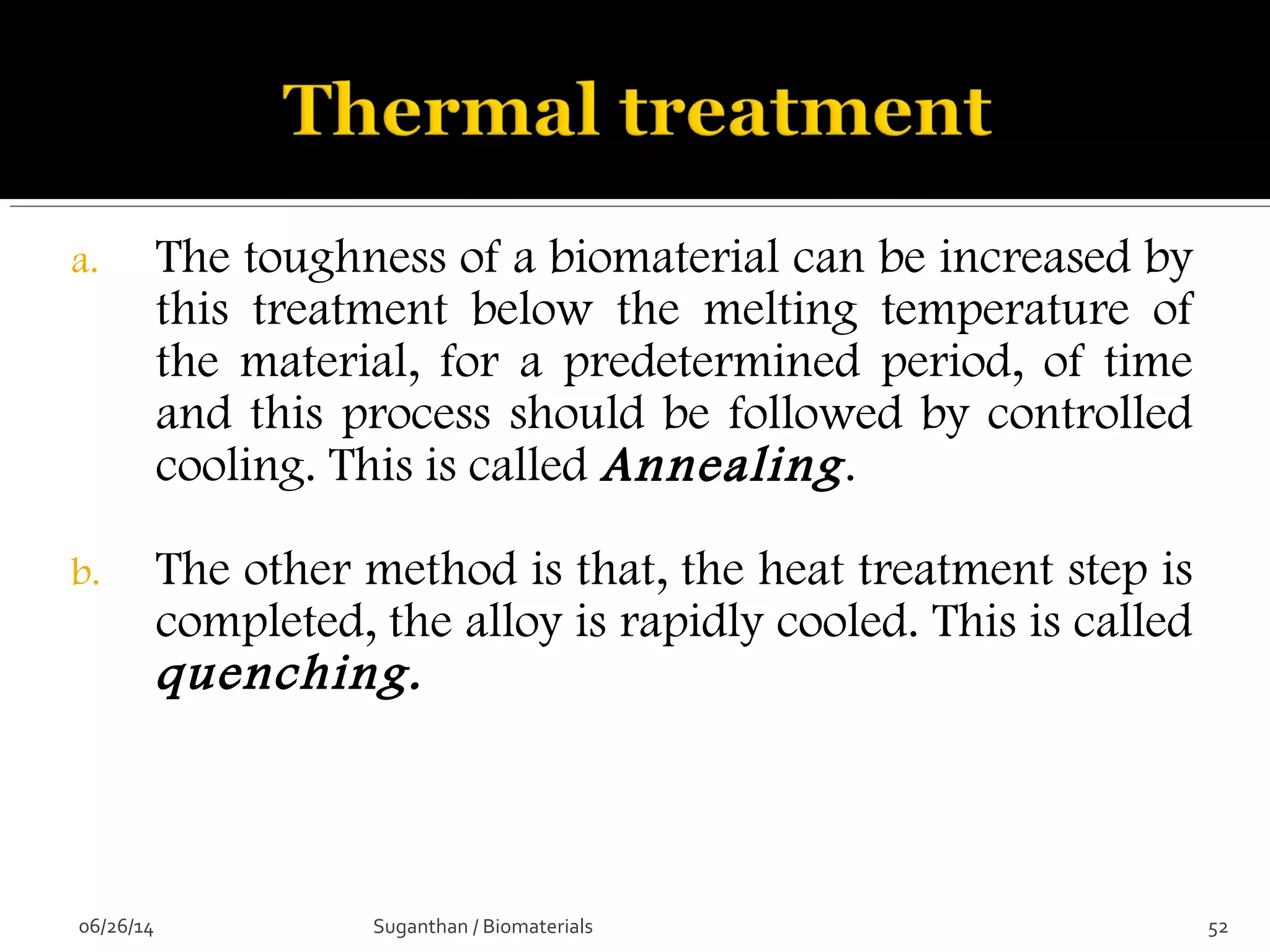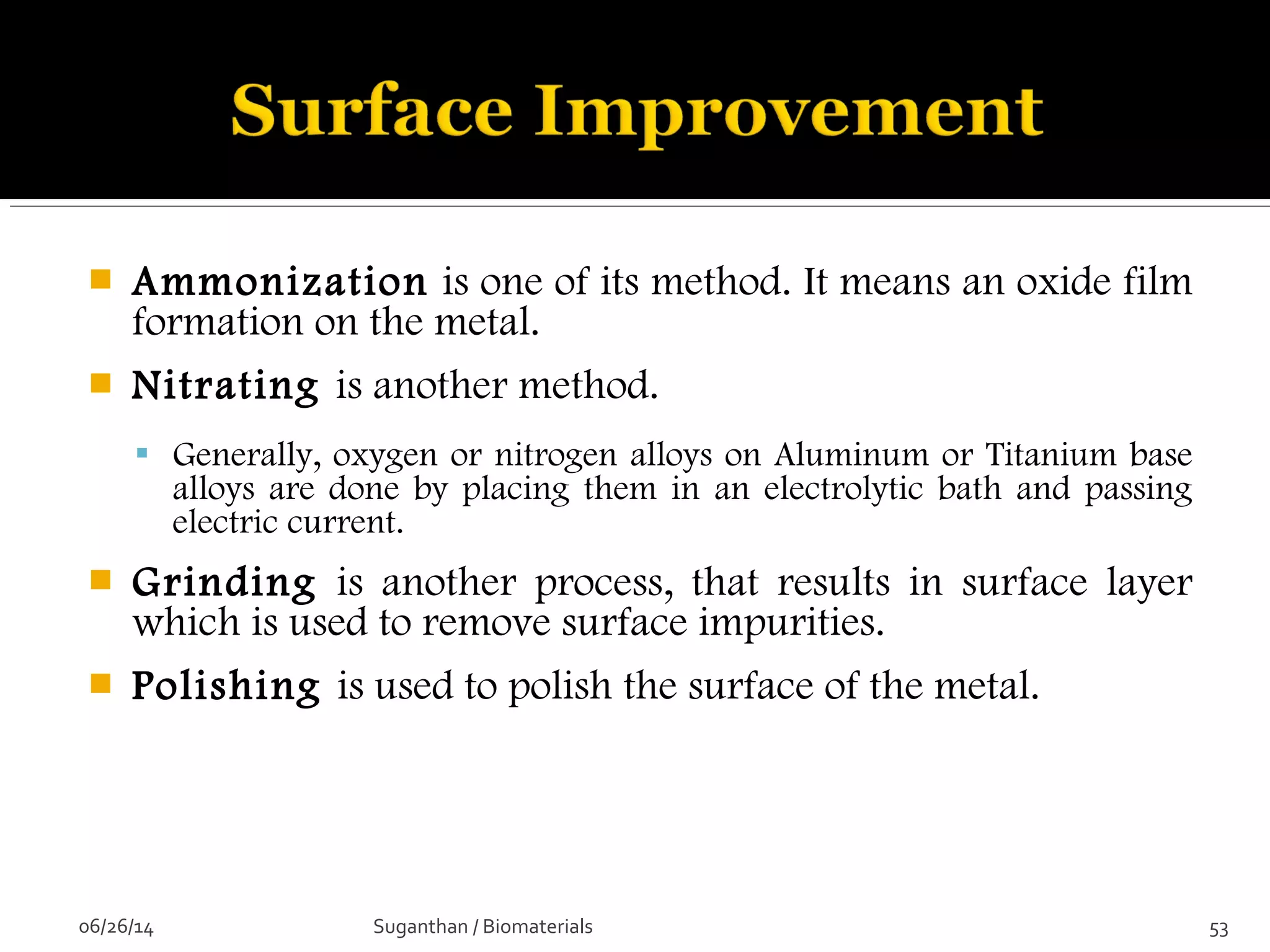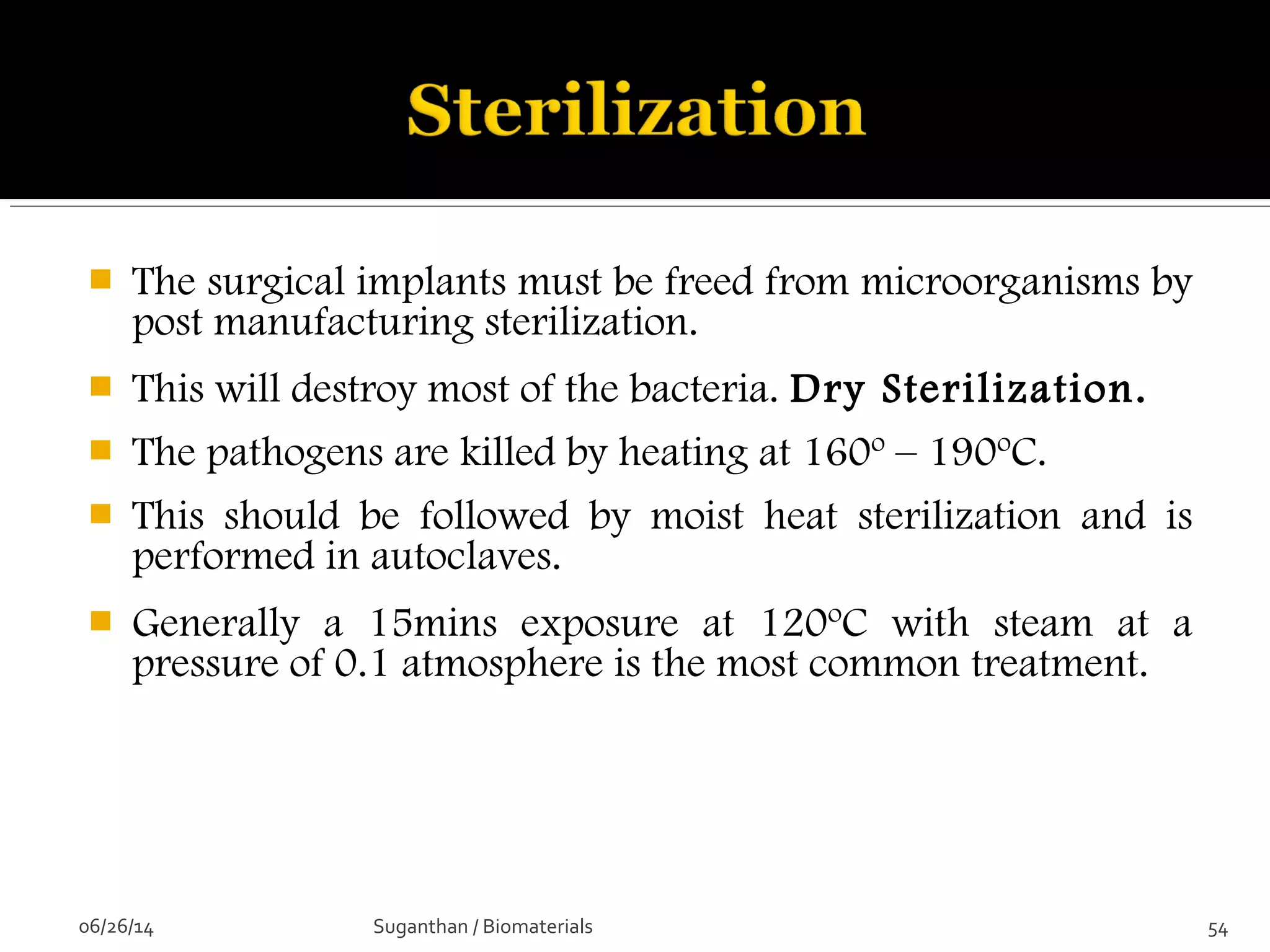This document discusses the history and development of biomaterials. It begins by describing early biomaterials like gold, iron, brass and glass that were used by physicians with little consideration of material properties. The document then outlines major developments in biomaterials from the 1860s to the present day for applications like orthopedics, dental, cardiovascular and others. Key points covered include the regulatory framework for biomaterials and medical devices as well as current and future directions in the field.
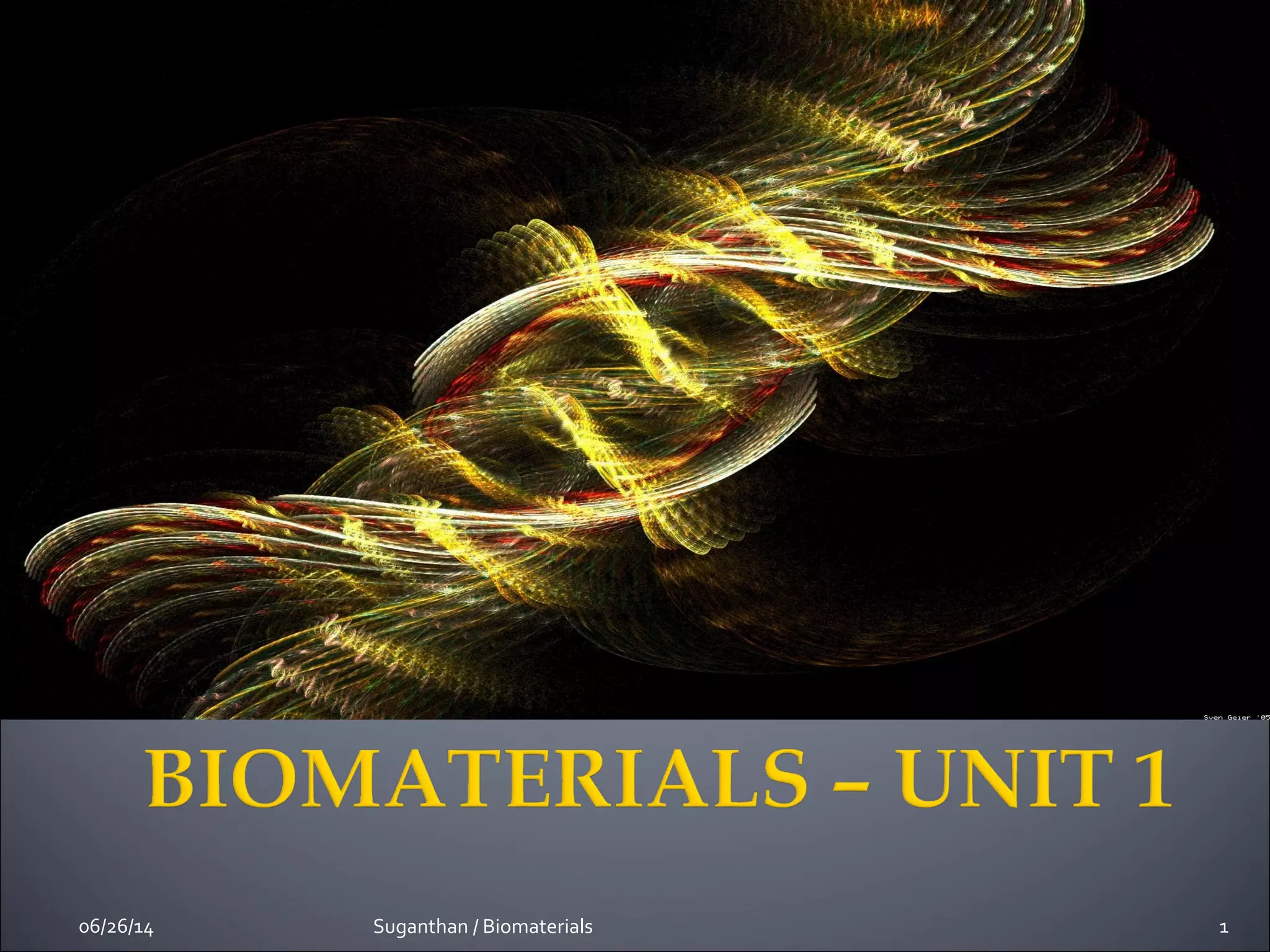
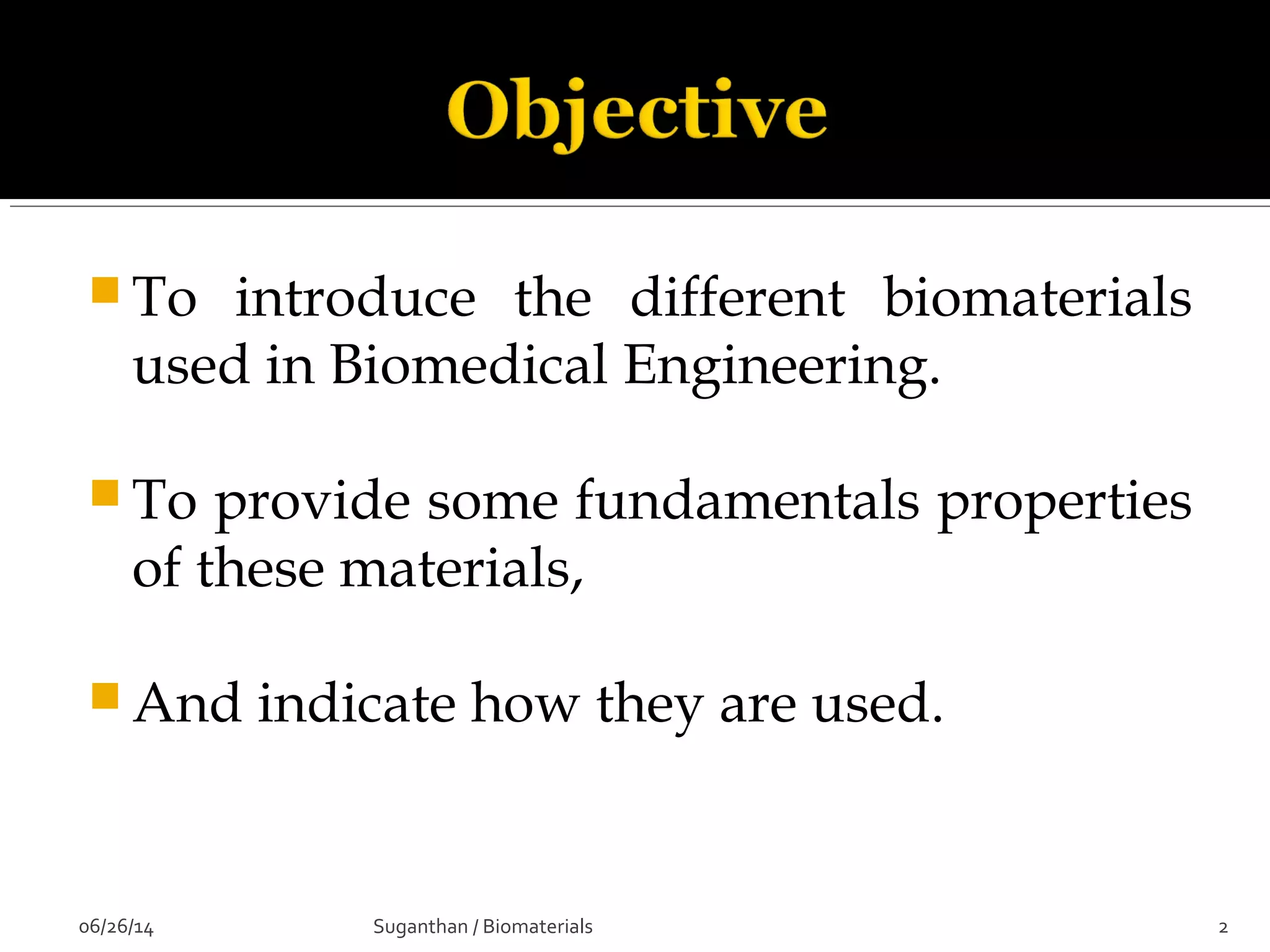
![ Historically, biomaterials consisted of materials
common in the laboratories of physicians, with little
consideration of materials properties.
Early biomaterials:
Gold: Malleable, inert metal [does not oxidiize], used in dentistry.
Iron, Brass: High Strength Metals, rejoin fractured femur
Glass: Hard ceramic, used to replace eye [cosmetic]
Wood: Natural composite, high strength to weight, used for limb
prostheses.
Bone: Natural composite.
06/26/14 3Suganthan / Biomaterials](https://image.slidesharecdn.com/biomaterialsanoverview-140626100833-phpapp01/75/Biomaterials-an-overview-3-2048.jpg)
![ 1860’s – Lister develops aseptic surgical technique
Early 1900’s: Bone plates used to fix fractures.
1930’s: Introduction of S.S, cobalt chromium alloys.
1938: First total hip prosthesis
1940’s: Polymers in medicine: PMMA bone repair, cellulose for
dialysis, nylon sutures.
1952: Mechanical heart valve
1953: Dacron [polymer fiber] vascular grafts
1958: Cemented [PMMA] joint replacement
1960: first commercial heart valve
1970’s: PEO protein resistant thin film coating
1976: FDA amendment governing testing & production of
biomaterials / devices
1976: Artificial heart06/26/14 4Suganthan / Biomaterials](https://image.slidesharecdn.com/biomaterialsanoverview-140626100833-phpapp01/75/Biomaterials-an-overview-4-2048.jpg)
![ A biomaterial is a nonviable material used in a medical
device, intended to interact with biological systems
(Williams, 1987)
[OR]
Any material of natural or of synthetic origin that comes
in contact with tissue, blood or biological fluids, and
intended for use in prosthetic, diagnostic, therapeutic or
storage application without adversely affecting the
living organism and its components.
06/26/14 5Suganthan / Biomaterials](https://image.slidesharecdn.com/biomaterialsanoverview-140626100833-phpapp01/75/Biomaterials-an-overview-5-2048.jpg)

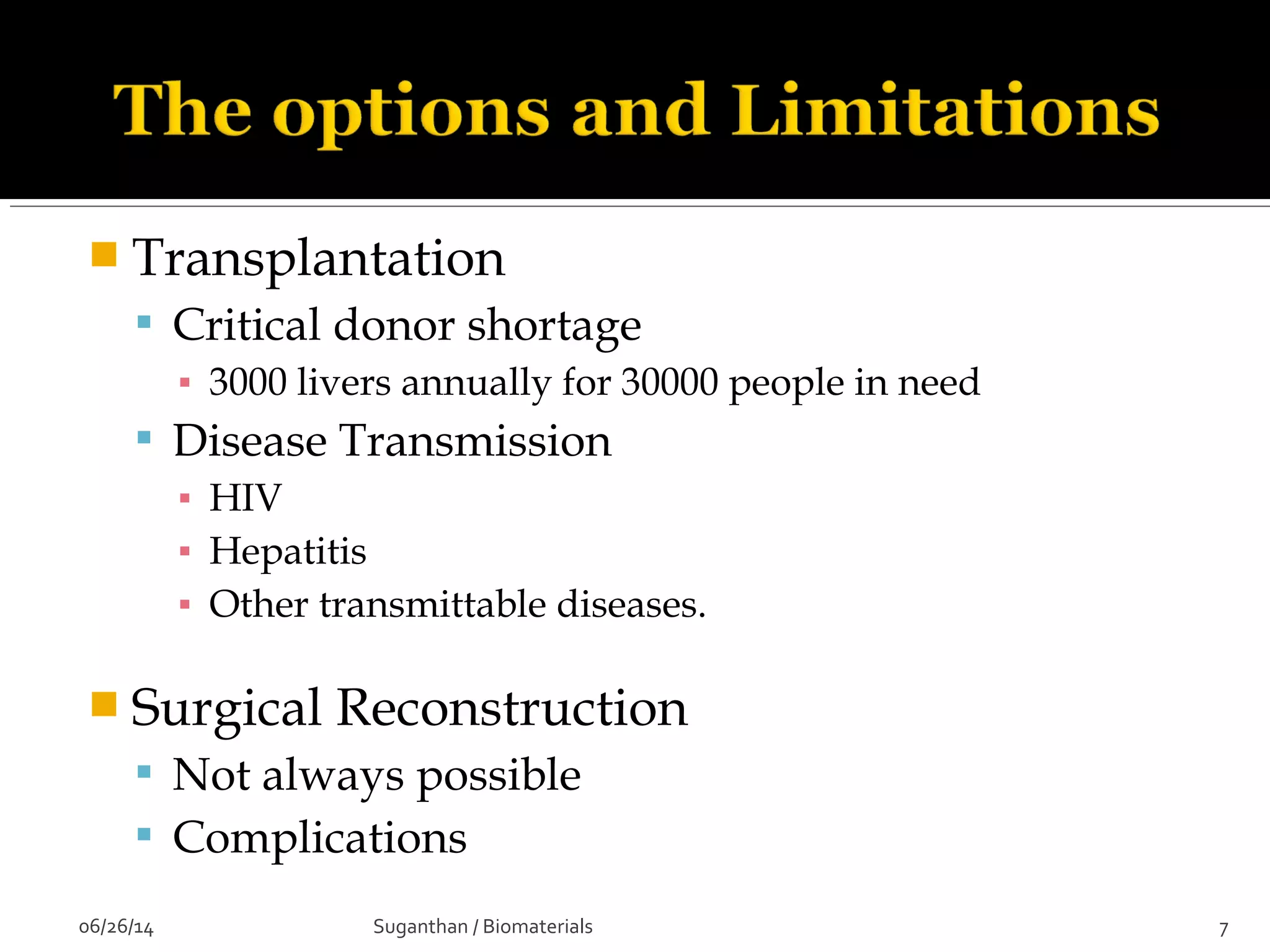

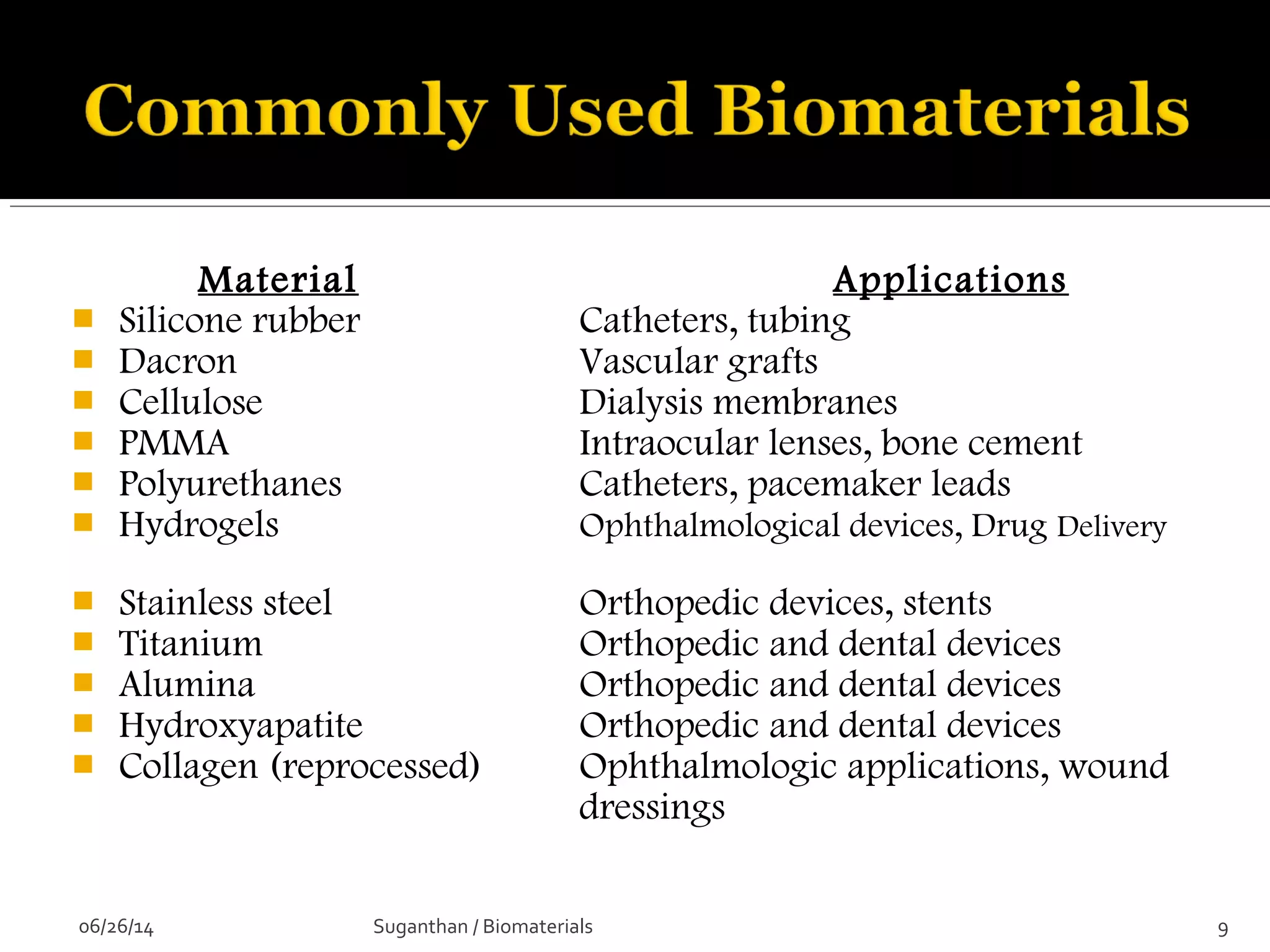

![ ‘Ad-hoc’ [unplanned] Implants
Specified by physicians using common and borrowed
materials
Most successes were accidental rather than by design
Examples – First generation Implants
Gold fillings, wooden teeth, PMMA dental prosthesis
Steel, gold, ivory, bone plates etc.
Glass eyes and other body parts
06/26/14 11Suganthan / Biomaterials](https://image.slidesharecdn.com/biomaterialsanoverview-140626100833-phpapp01/75/Biomaterials-an-overview-11-2048.jpg)
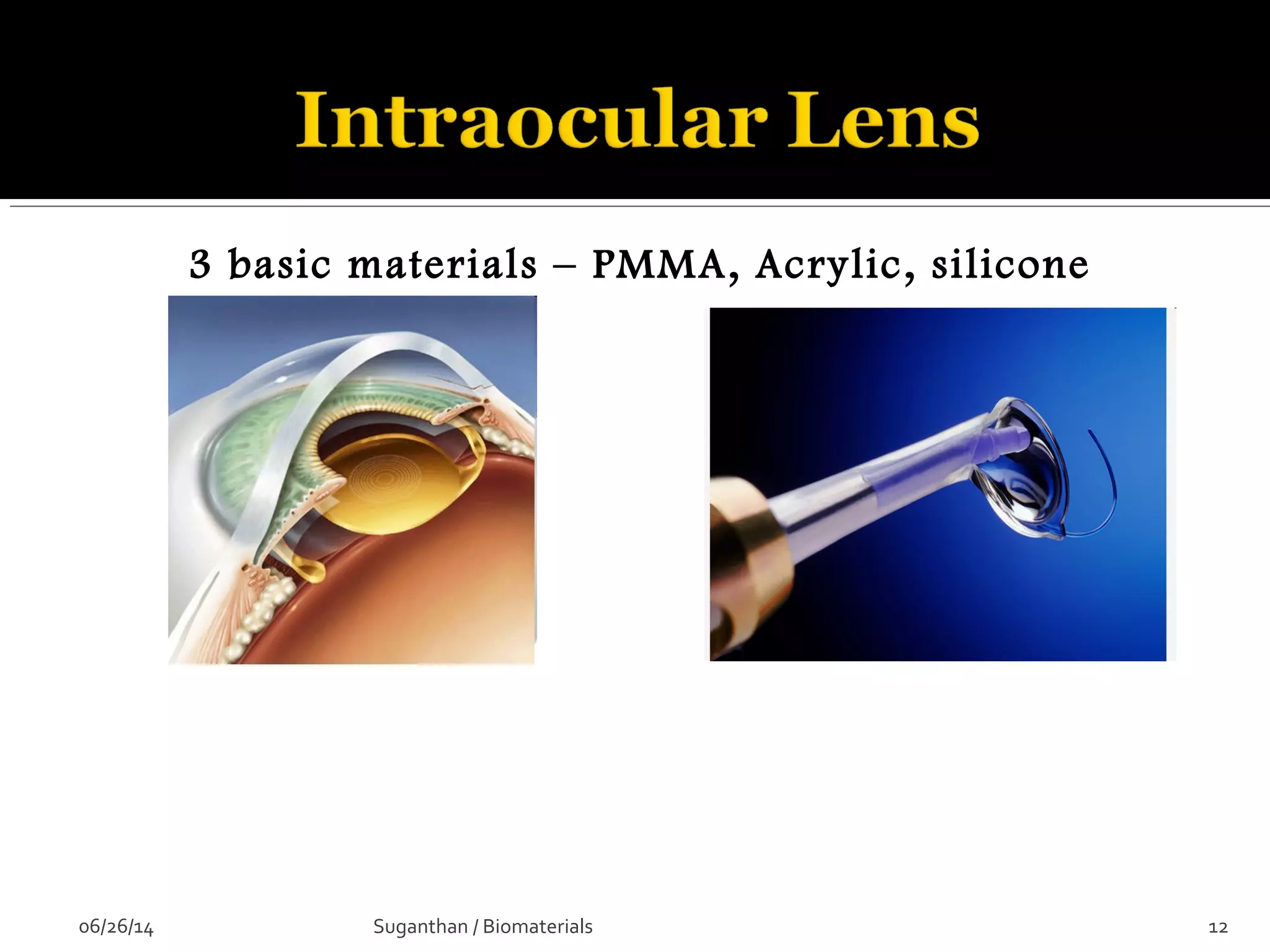
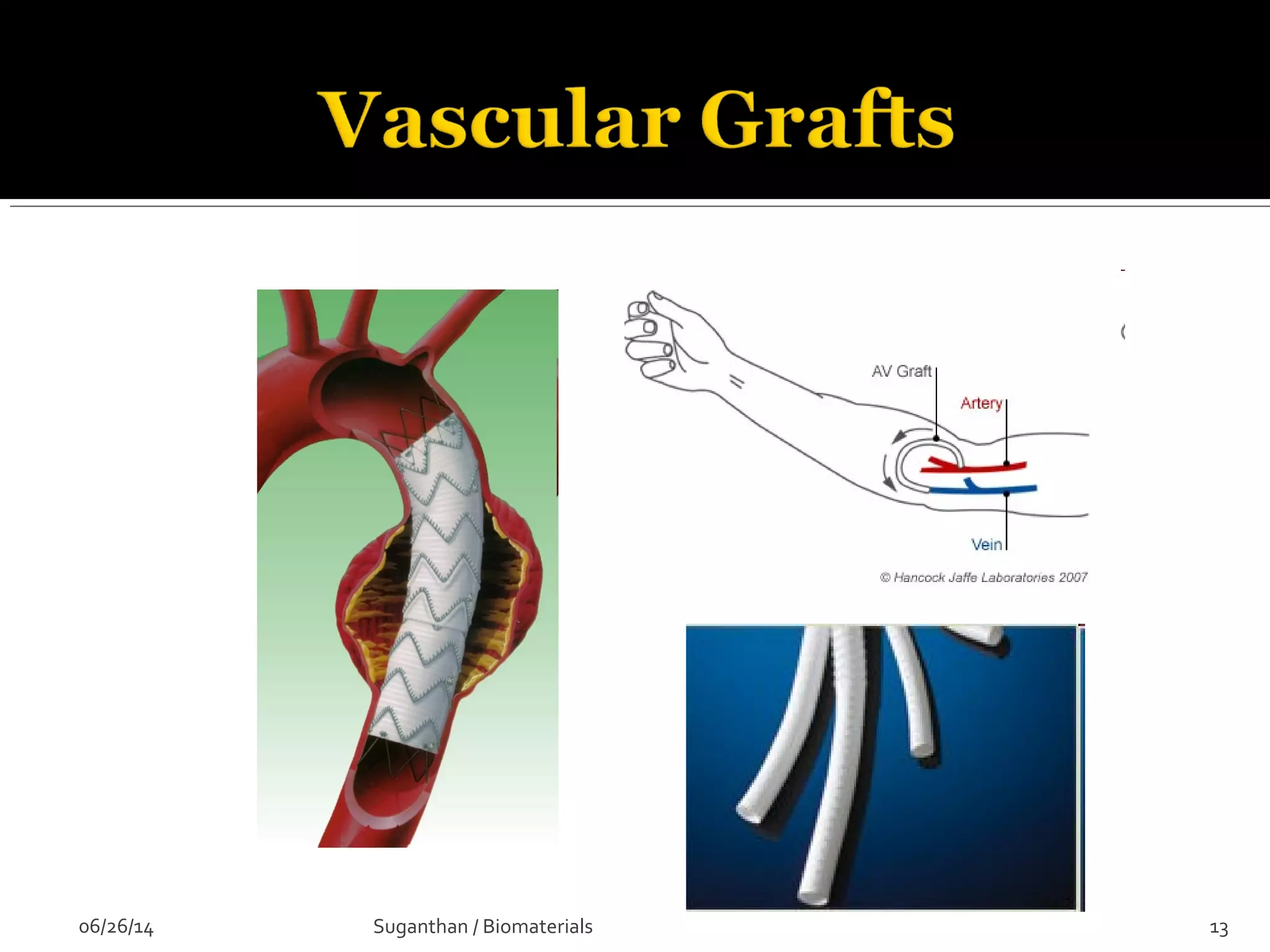
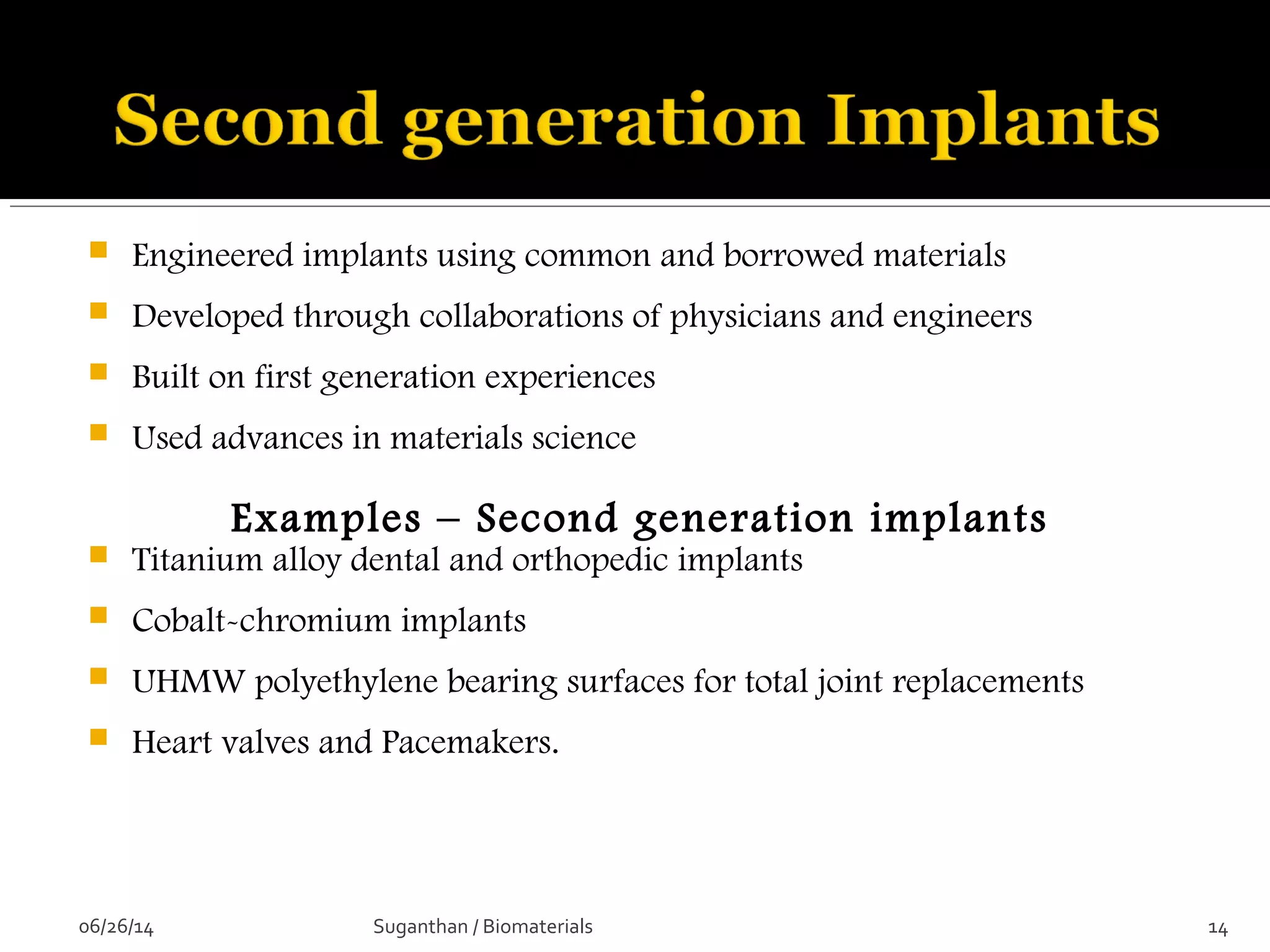
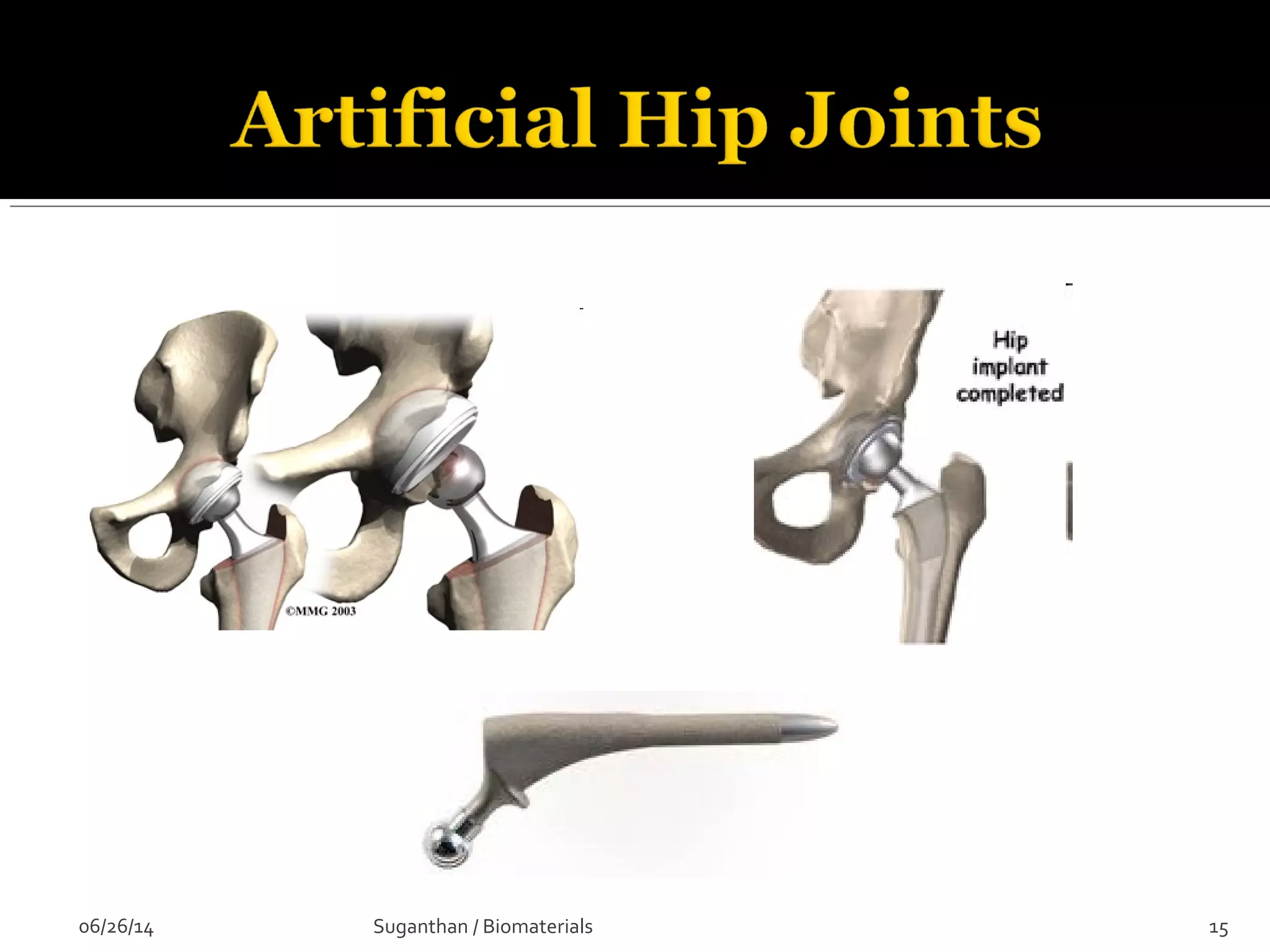
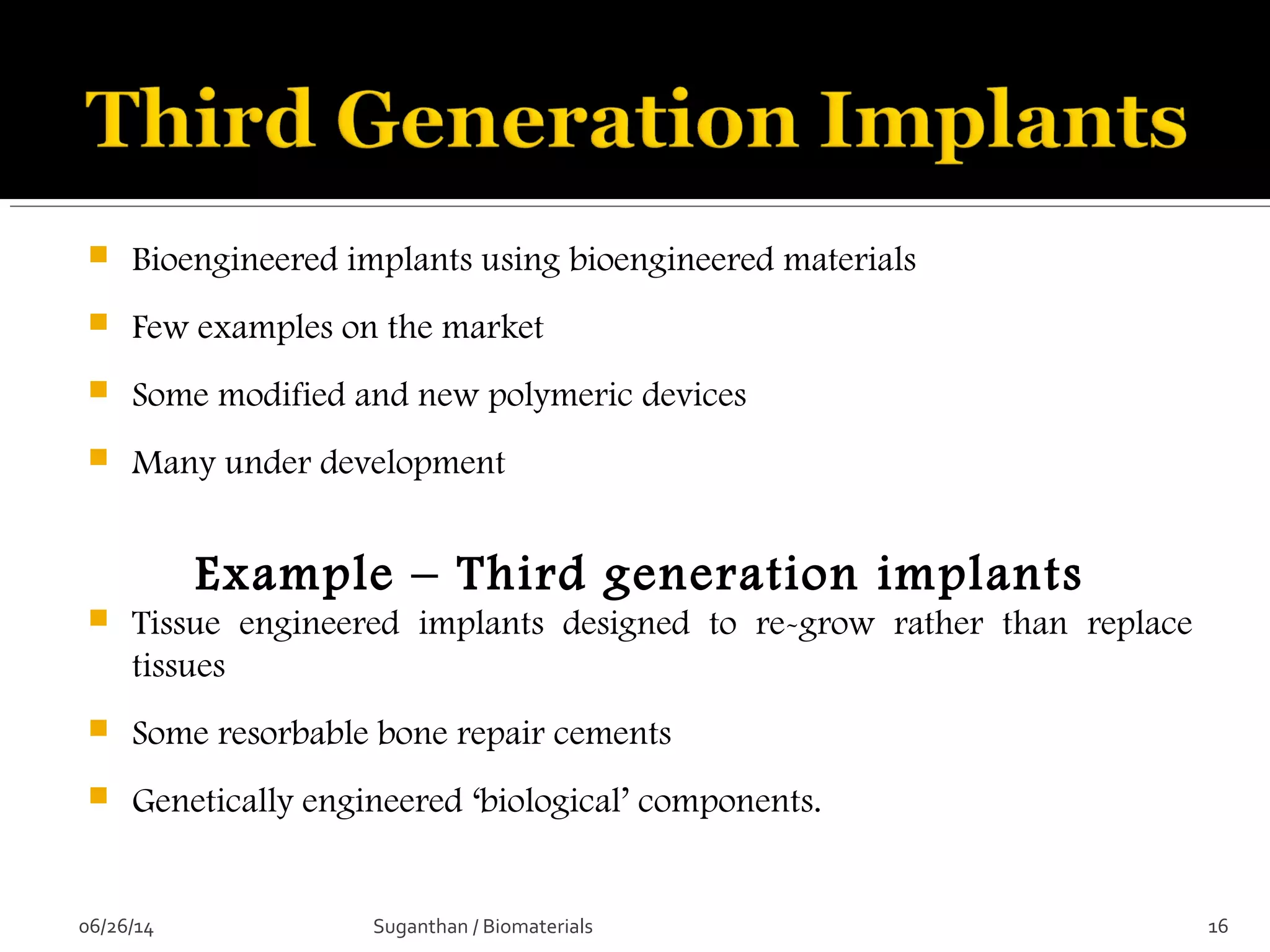
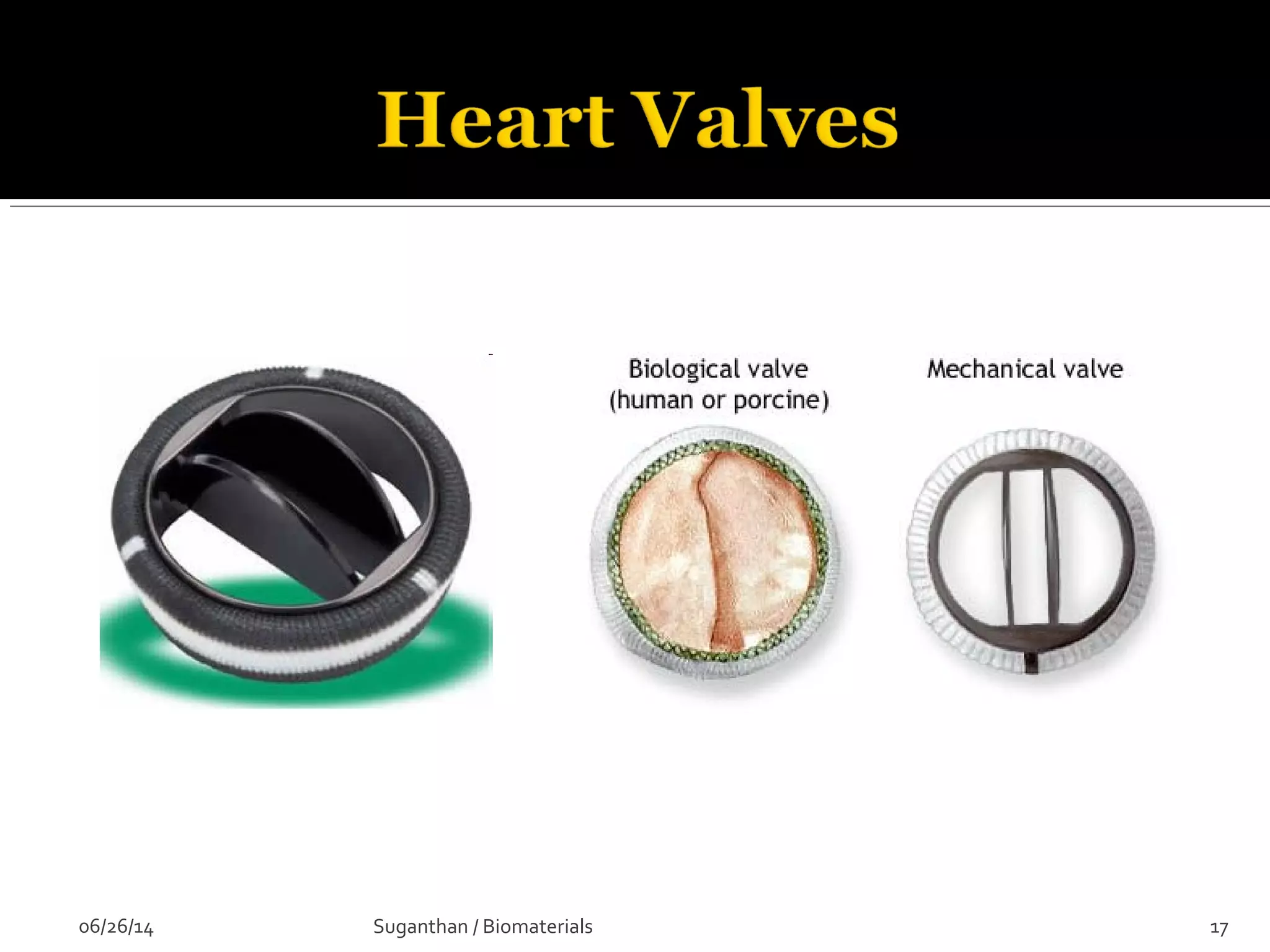
![…In the shape of a nose [left] is seeded with cells called
chondrocytes that replace the polymer with cartilage over
time [right] to make a suitable implants.
06/26/14 18Suganthan / Biomaterials](https://image.slidesharecdn.com/biomaterialsanoverview-140626100833-phpapp01/75/Biomaterials-an-overview-18-2048.jpg)
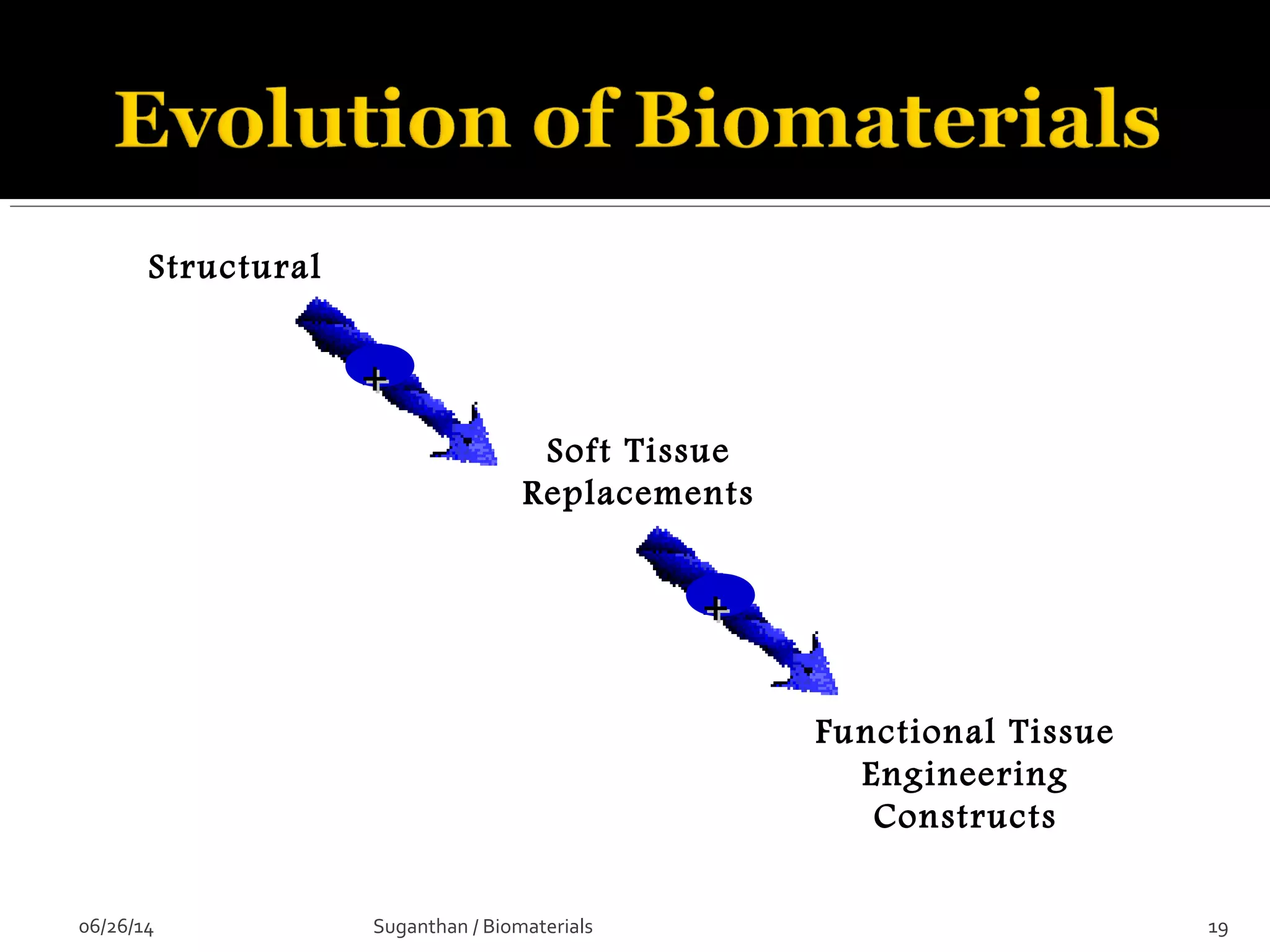

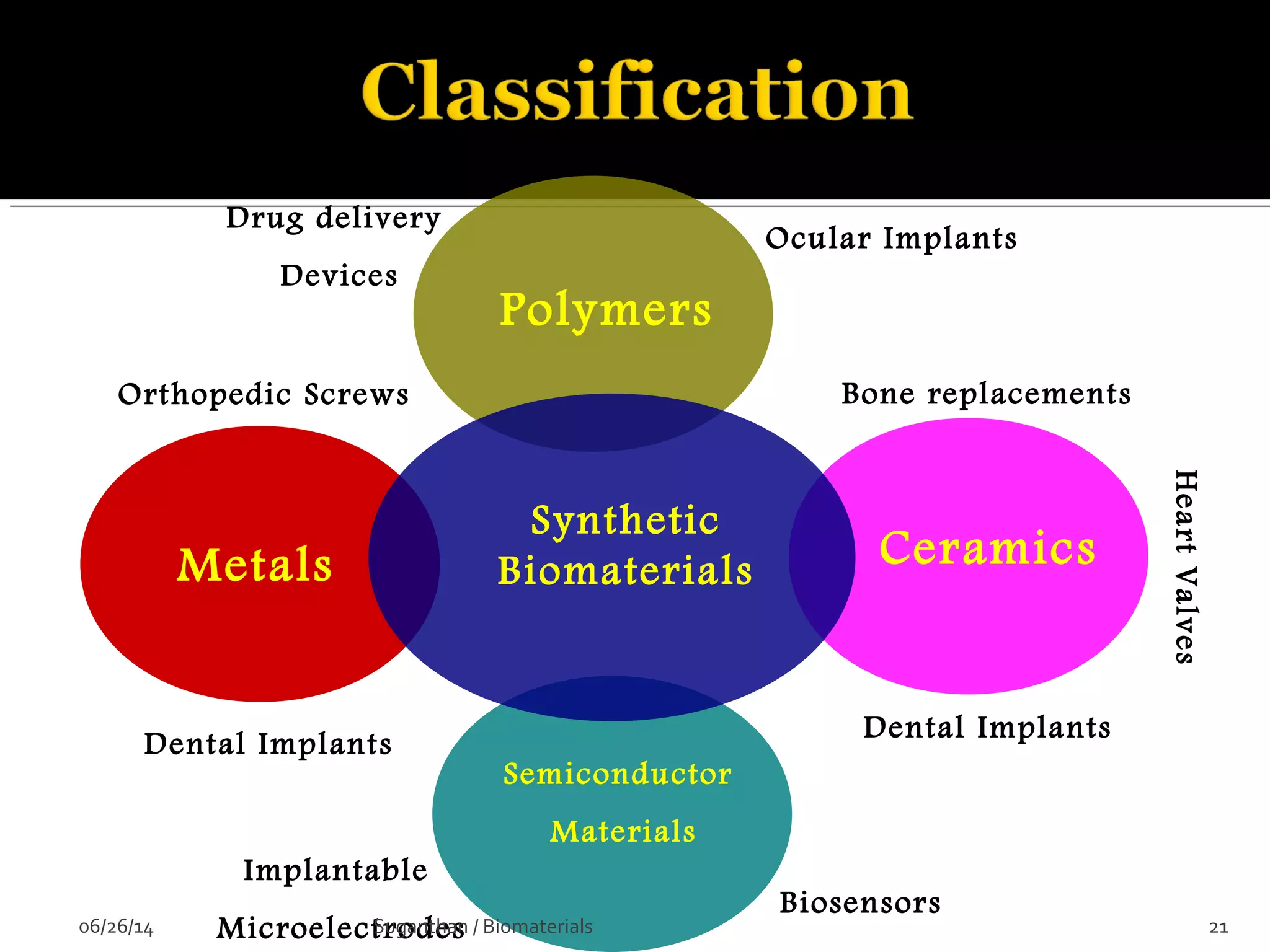
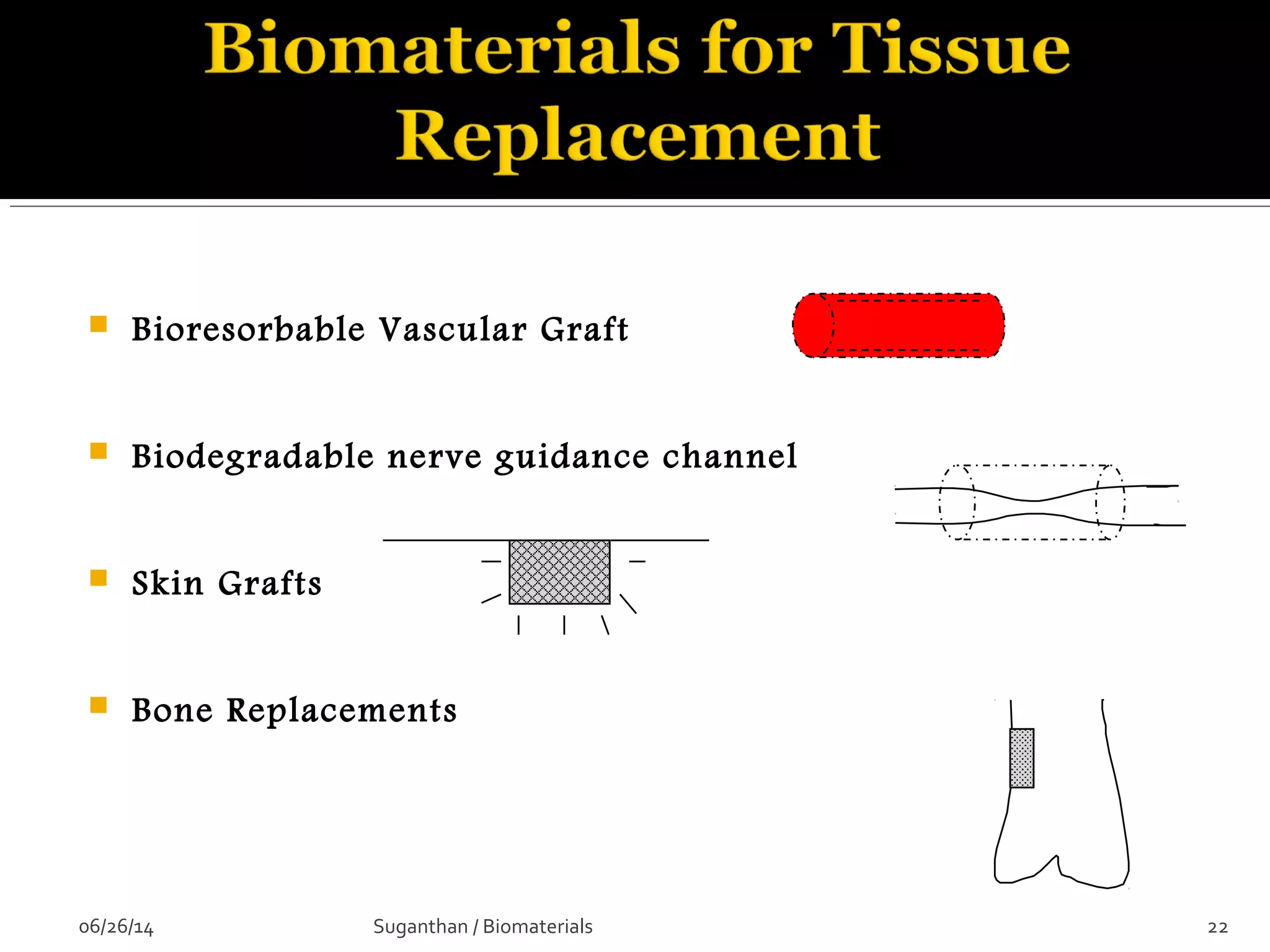

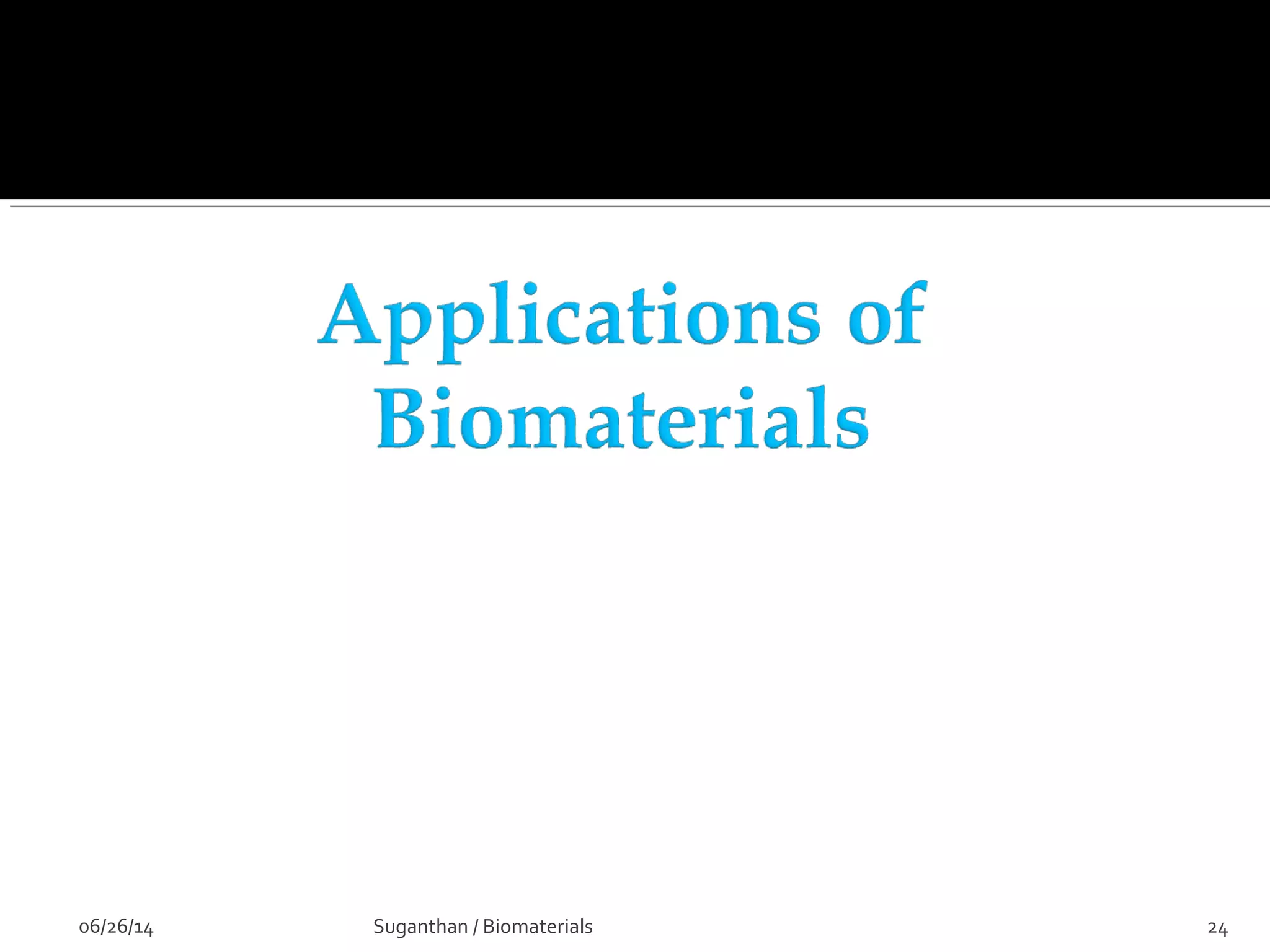


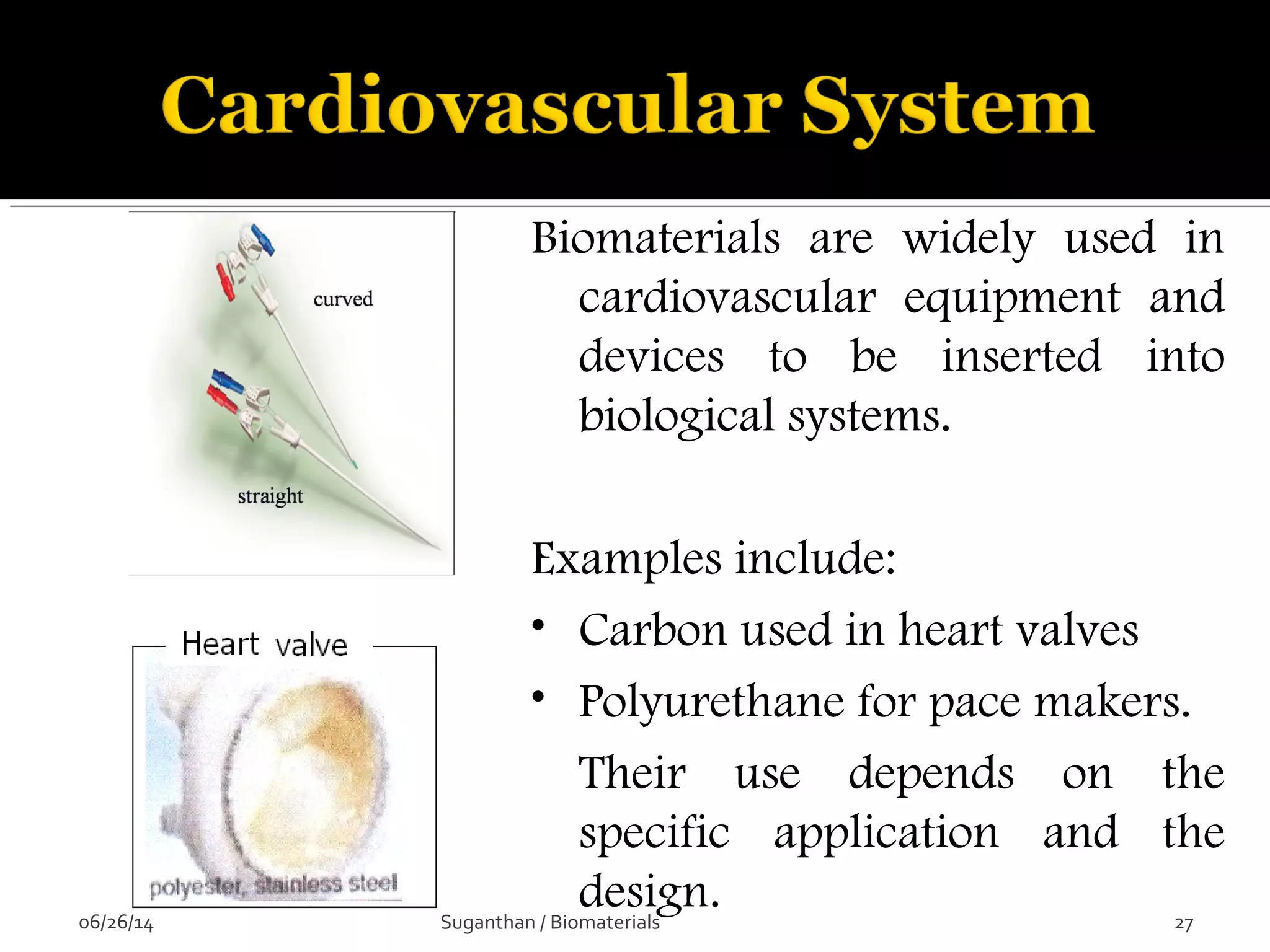
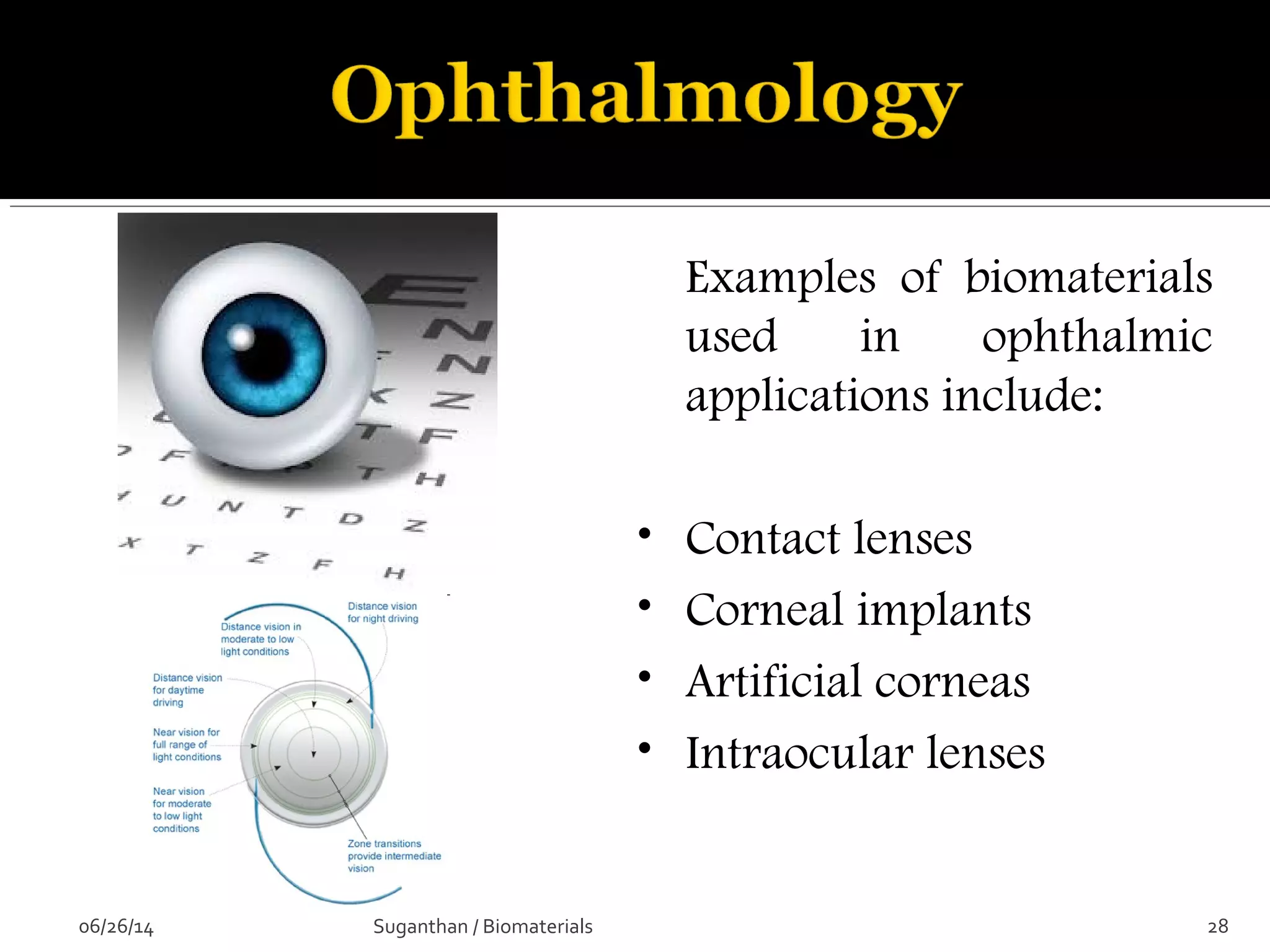
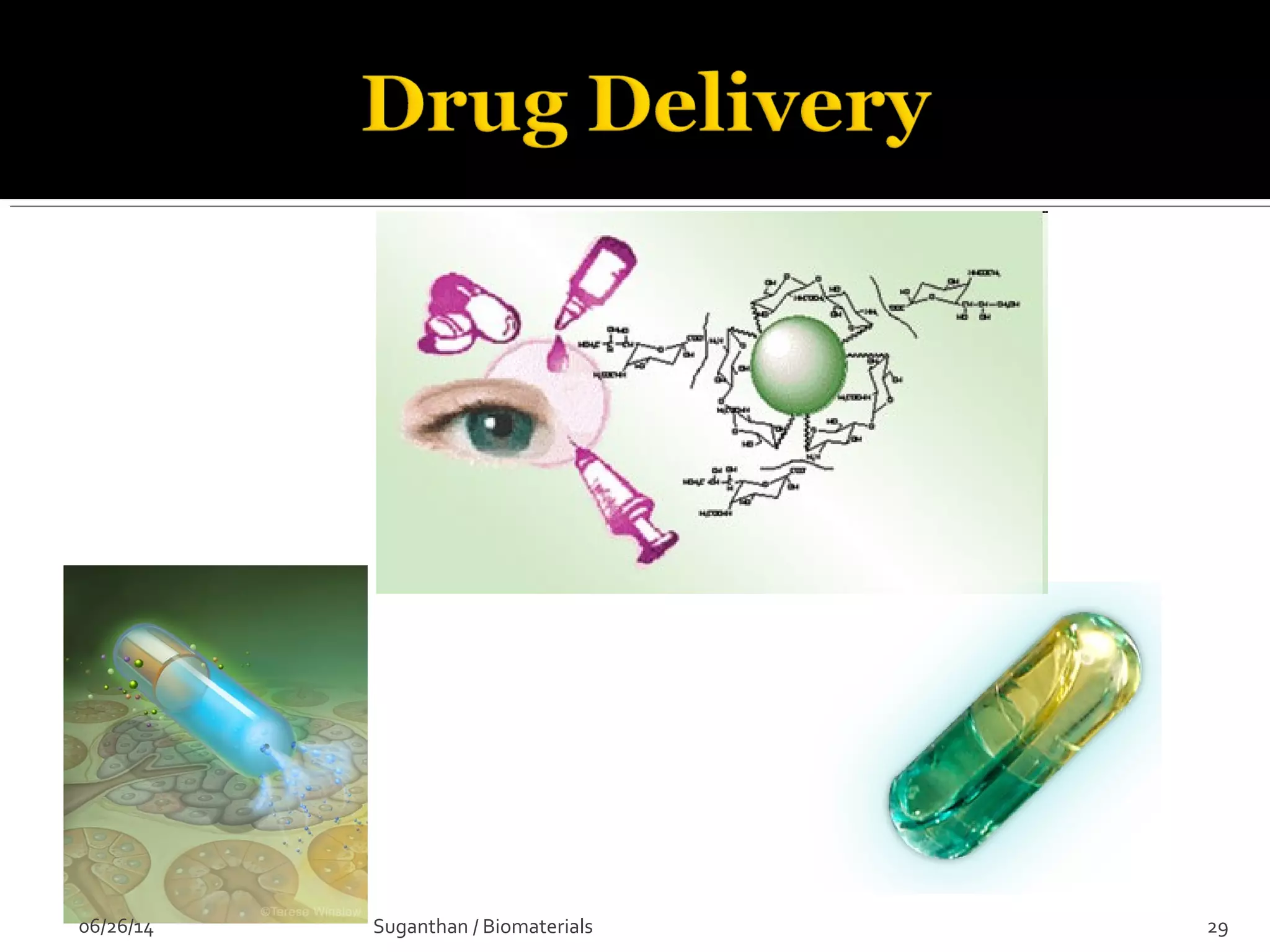
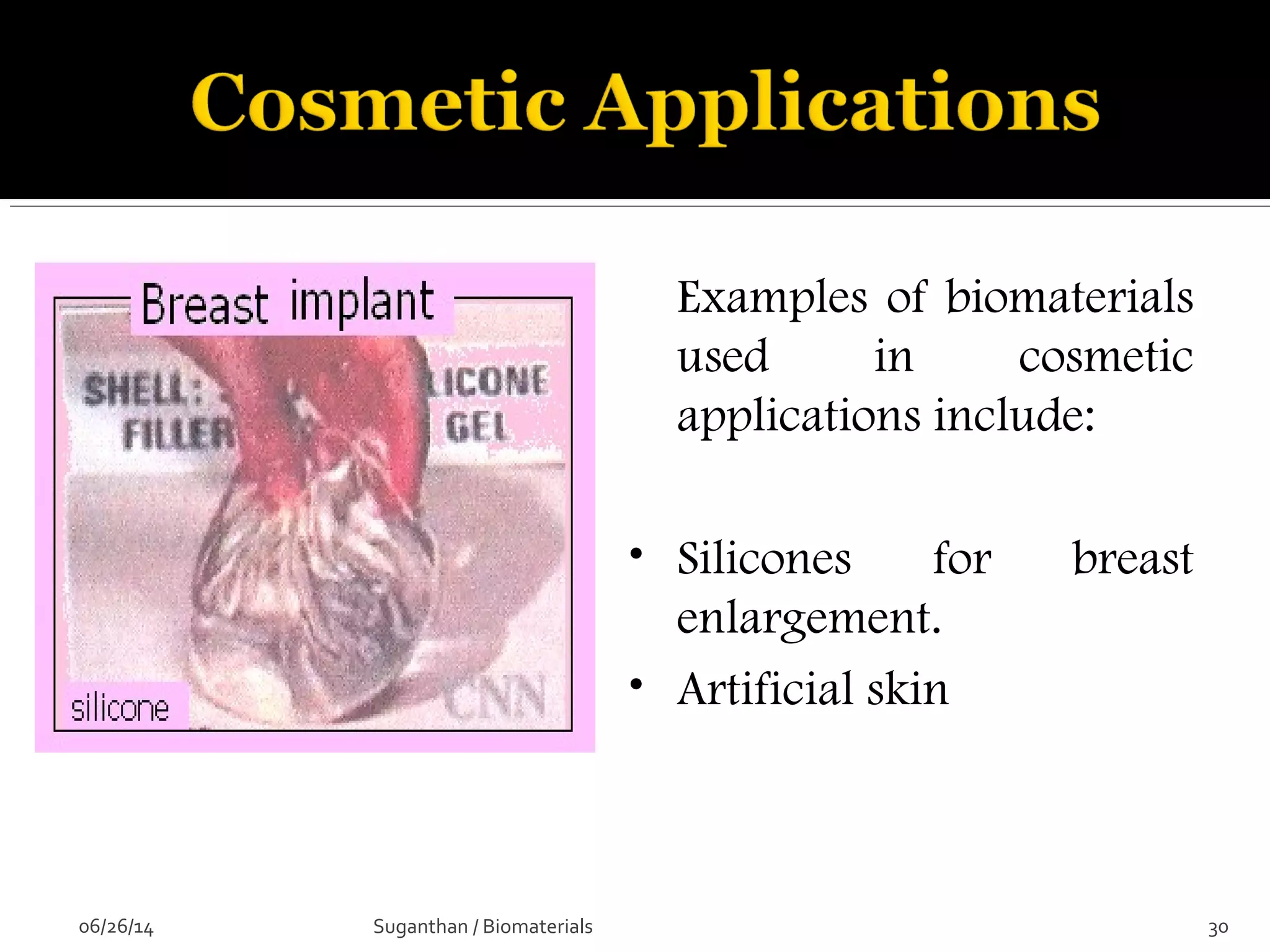
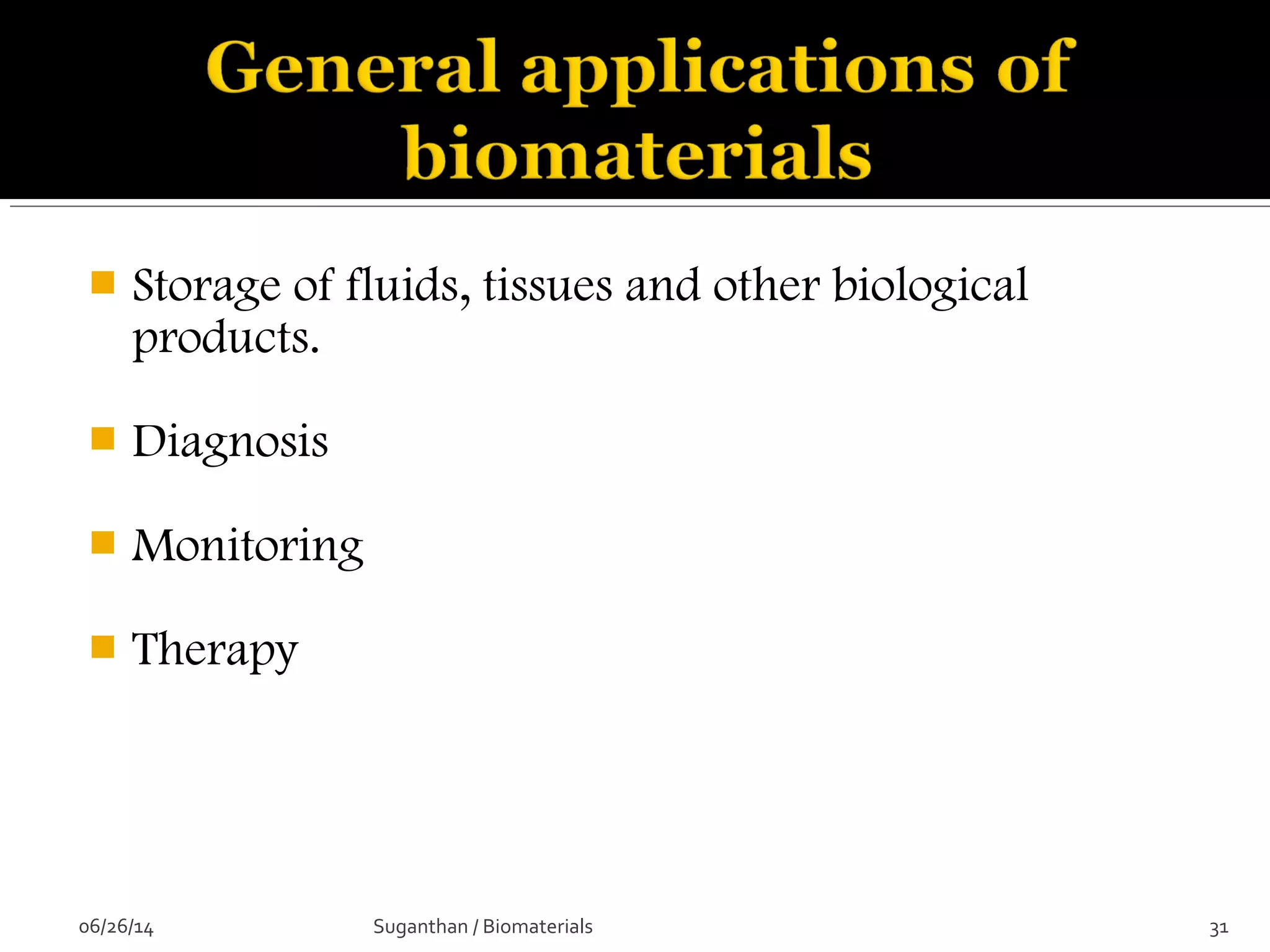
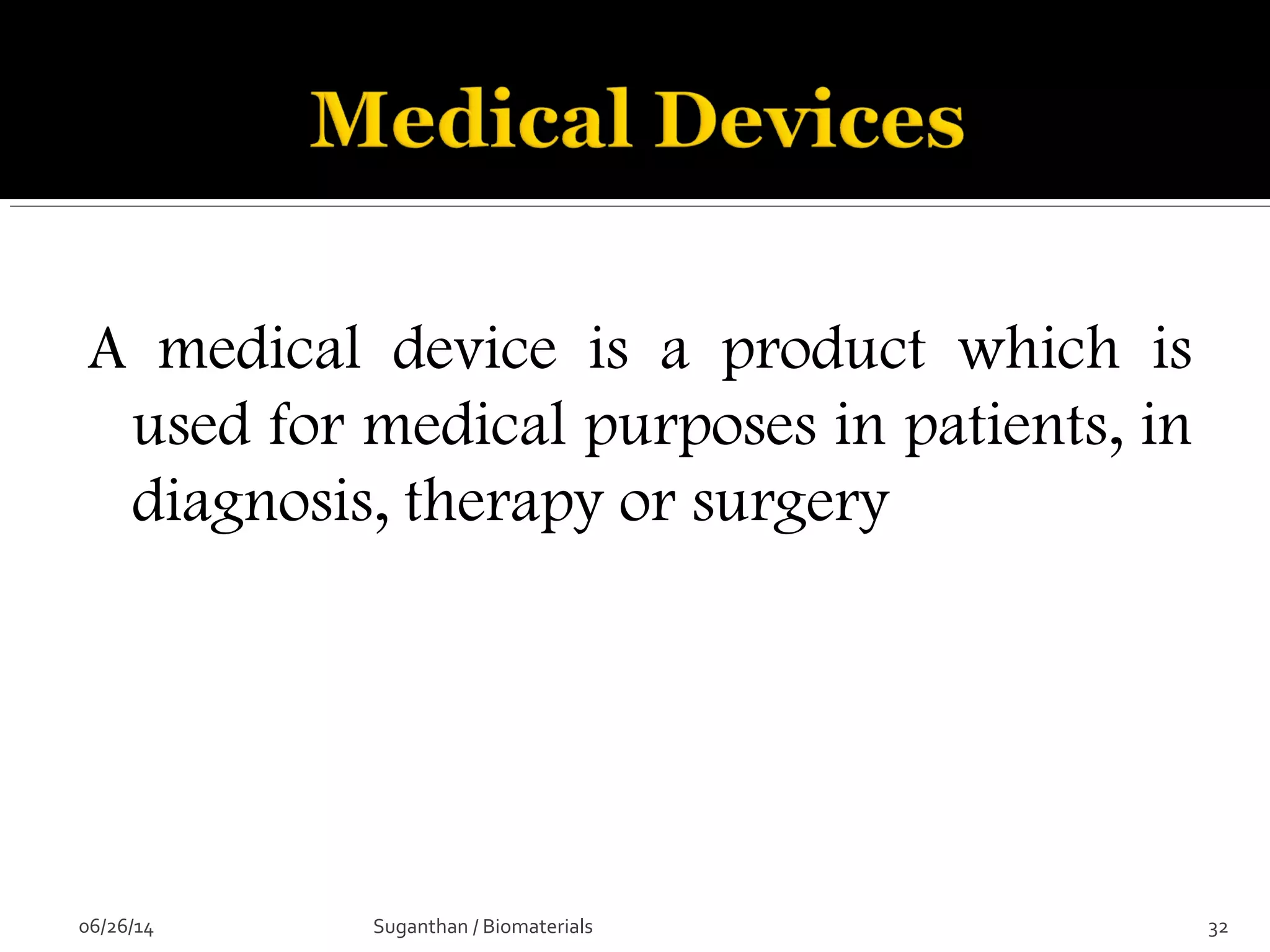
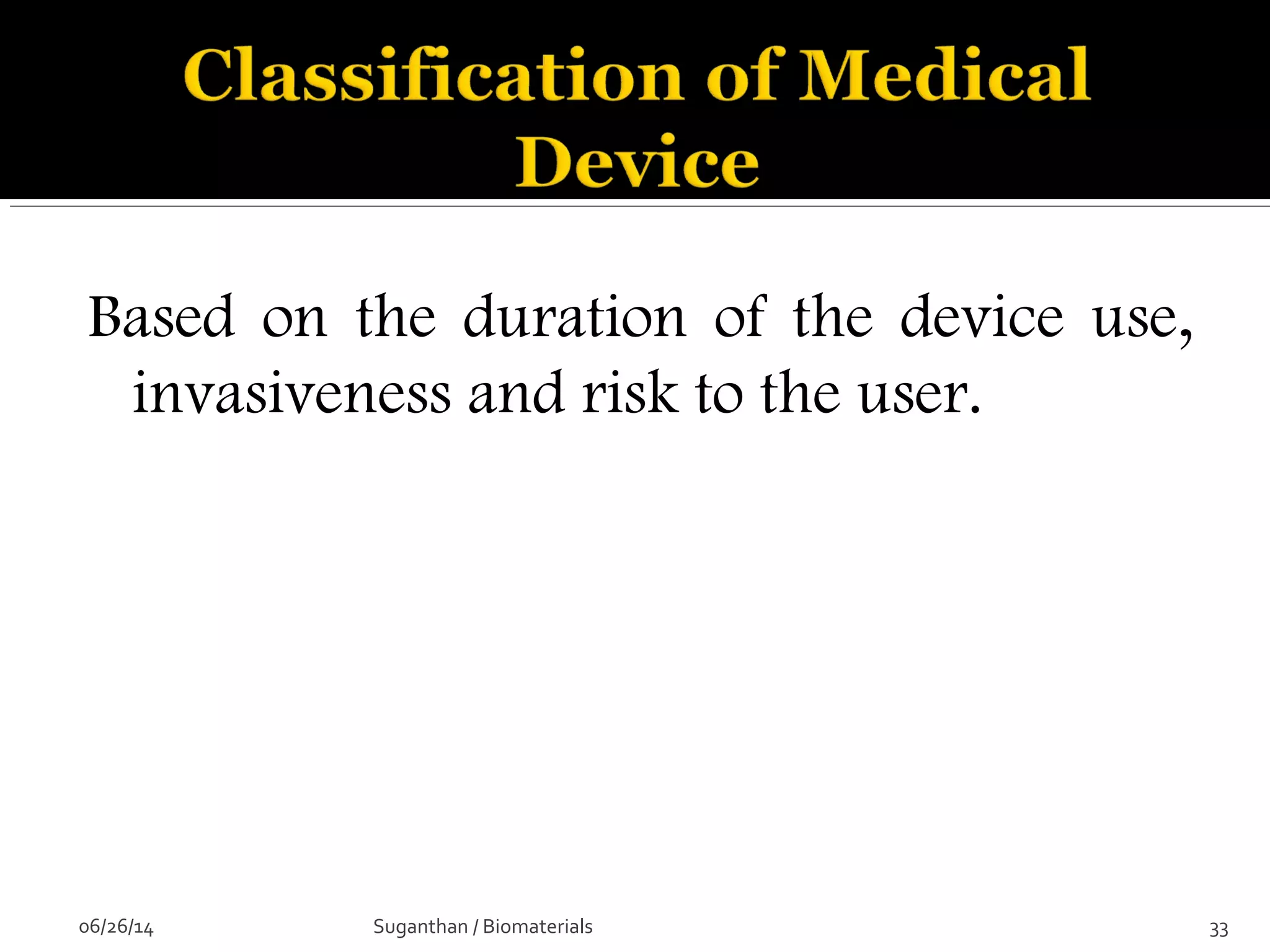
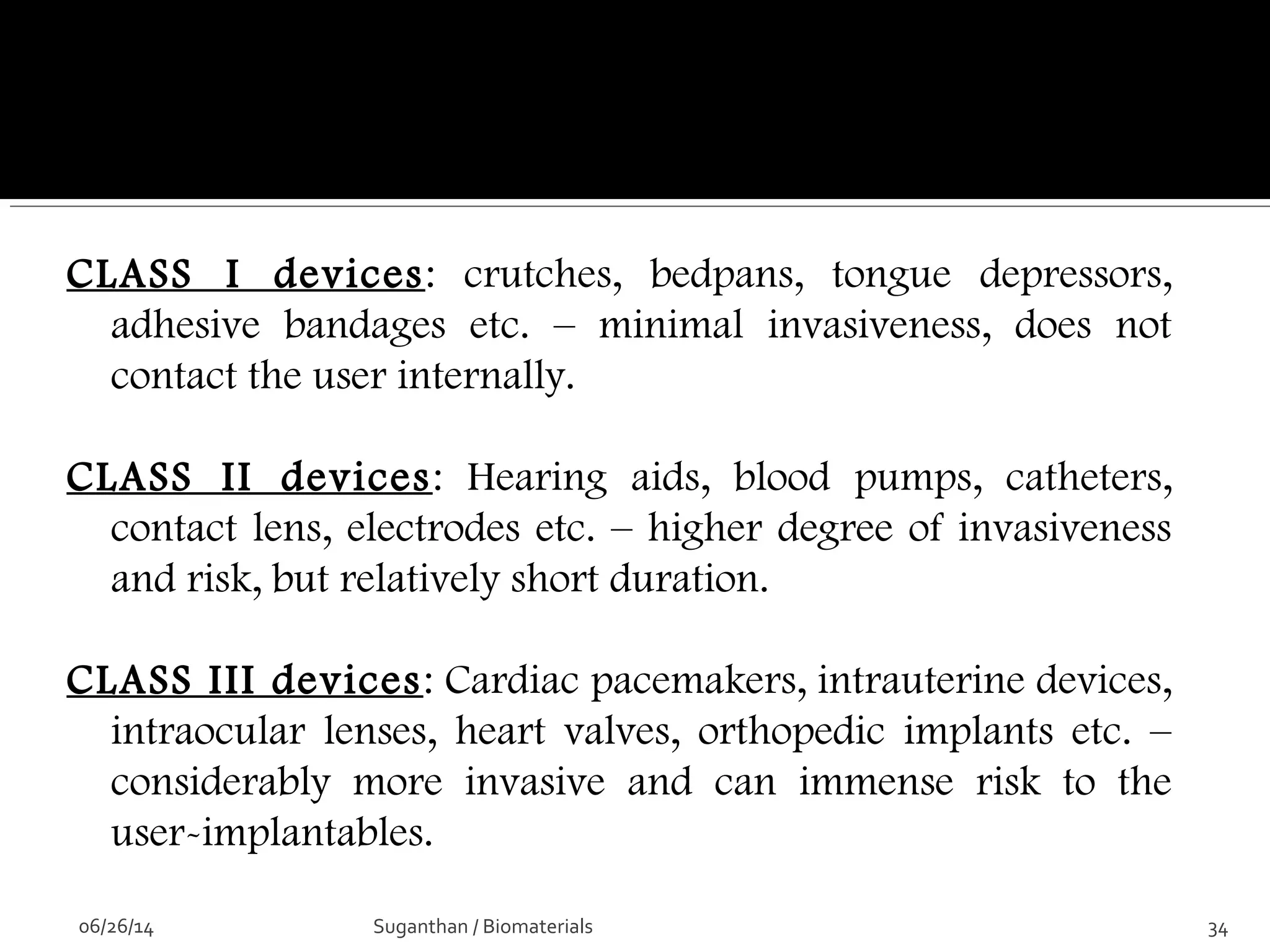
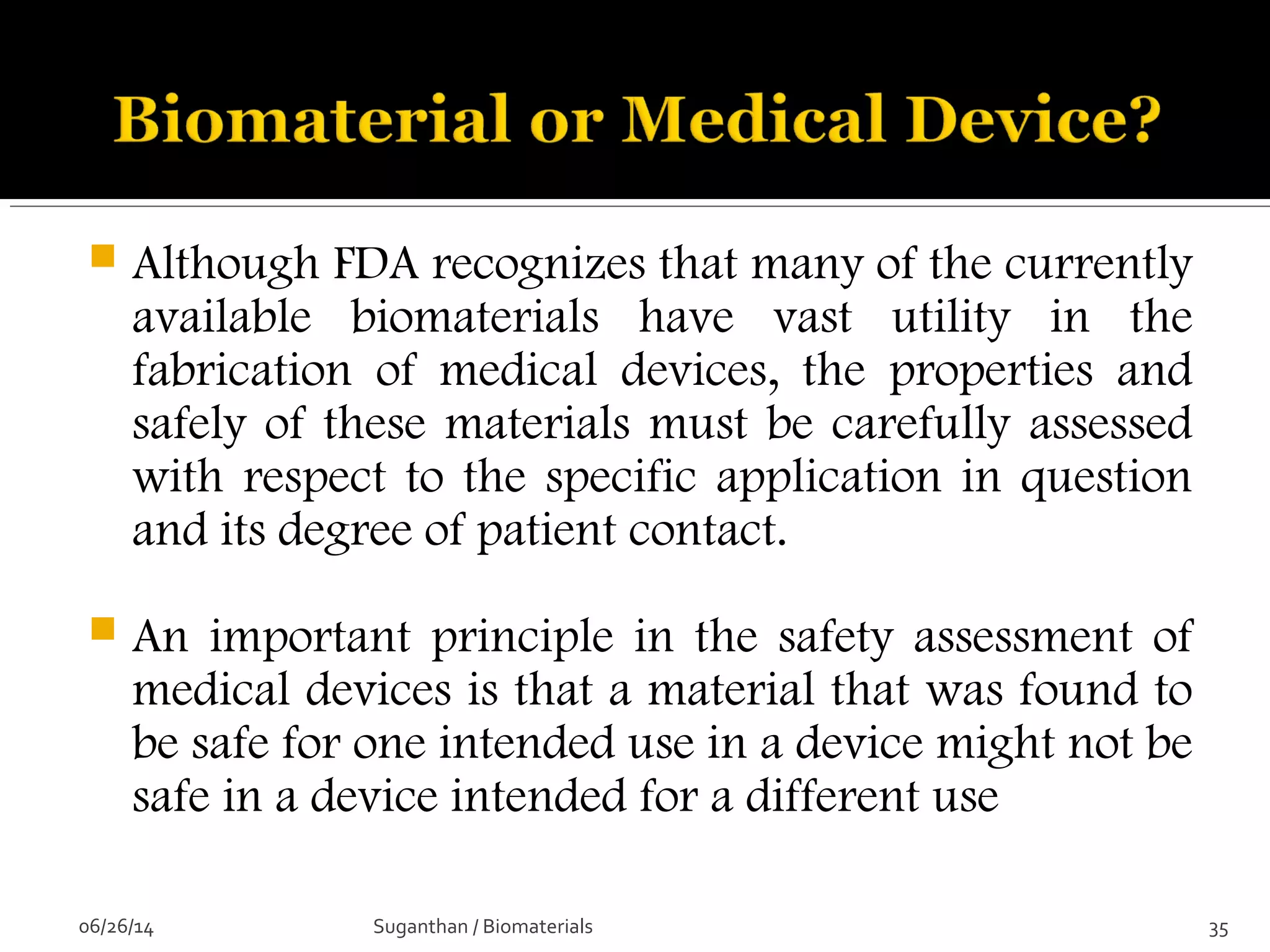
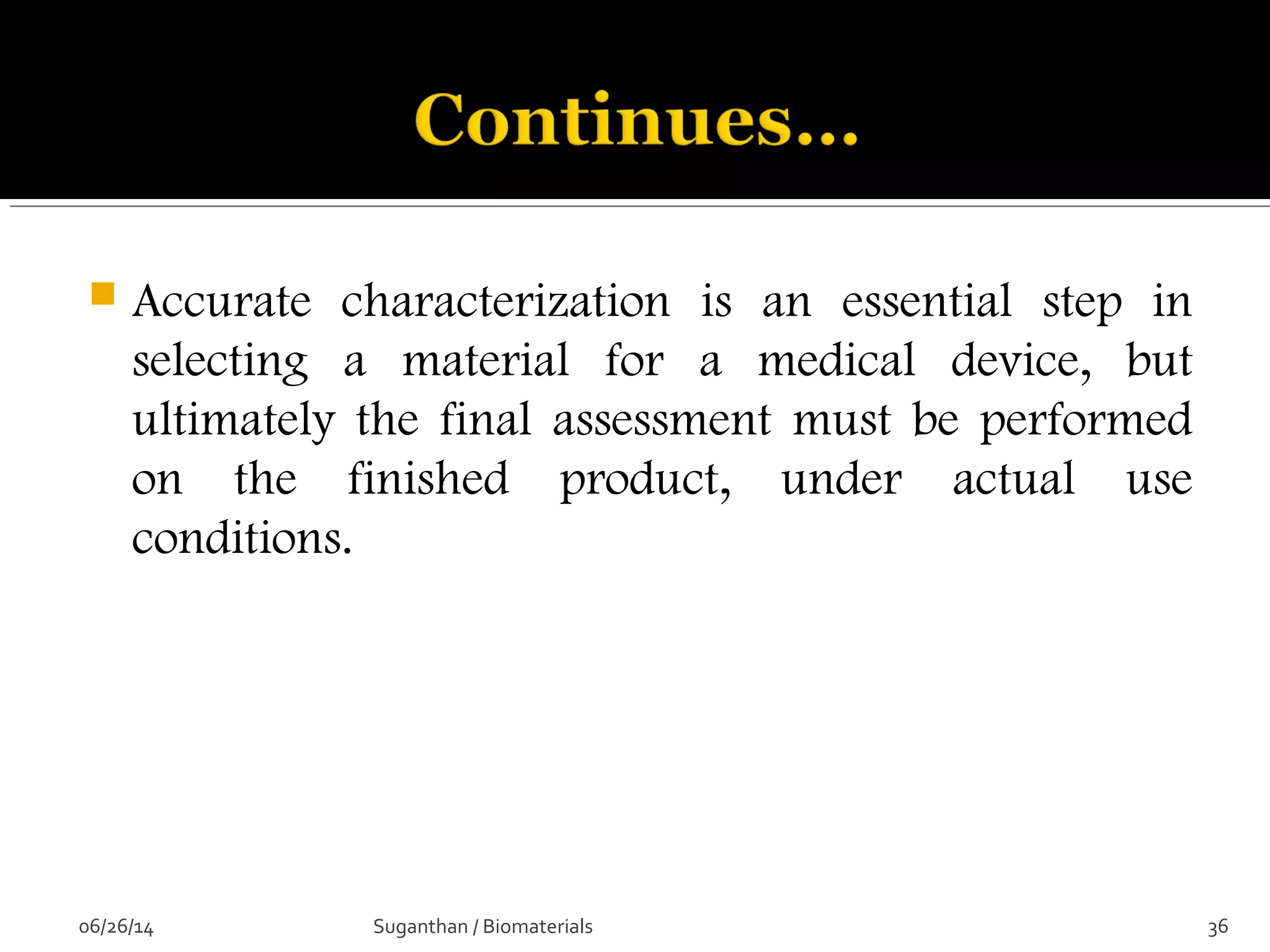
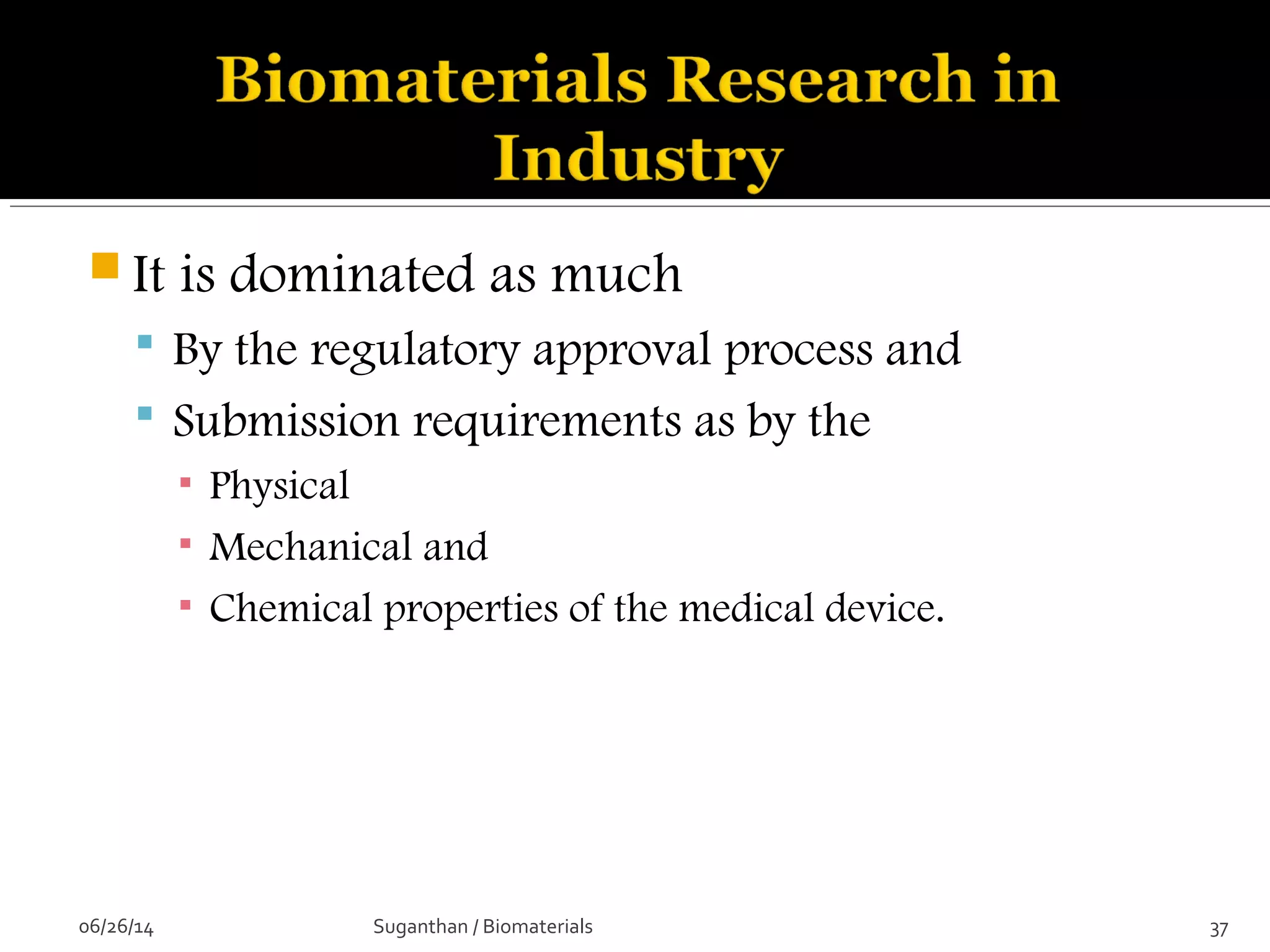
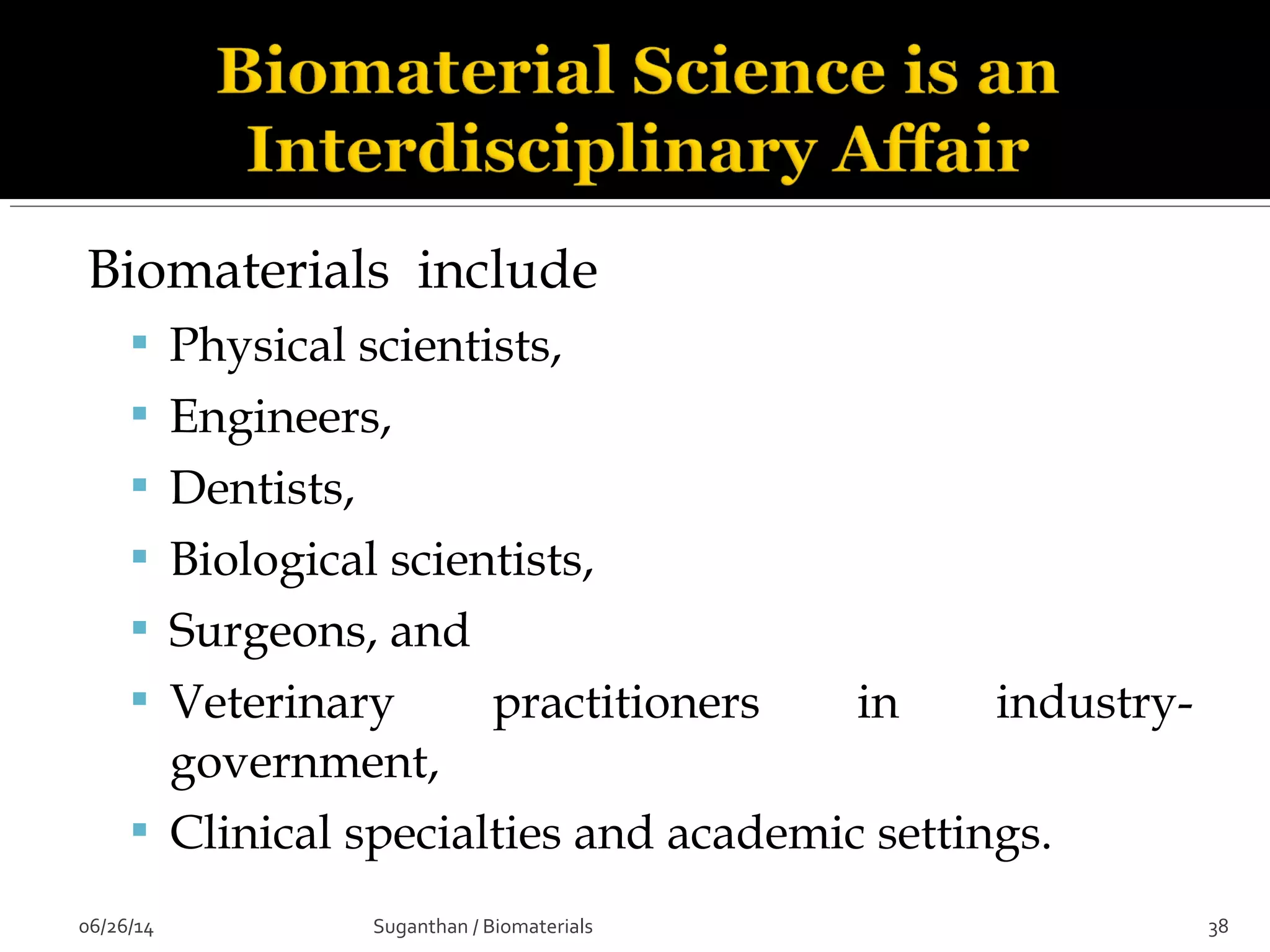
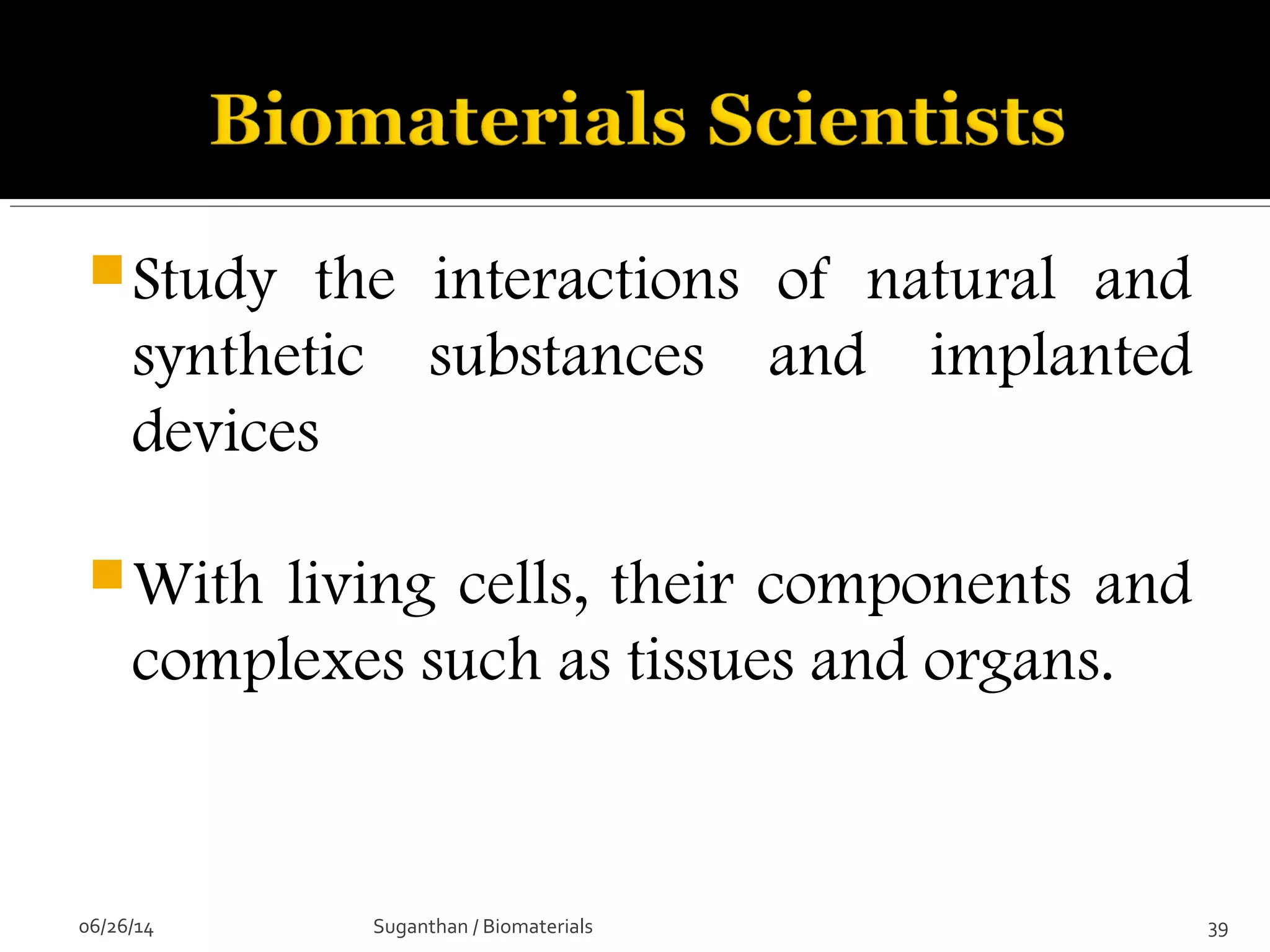

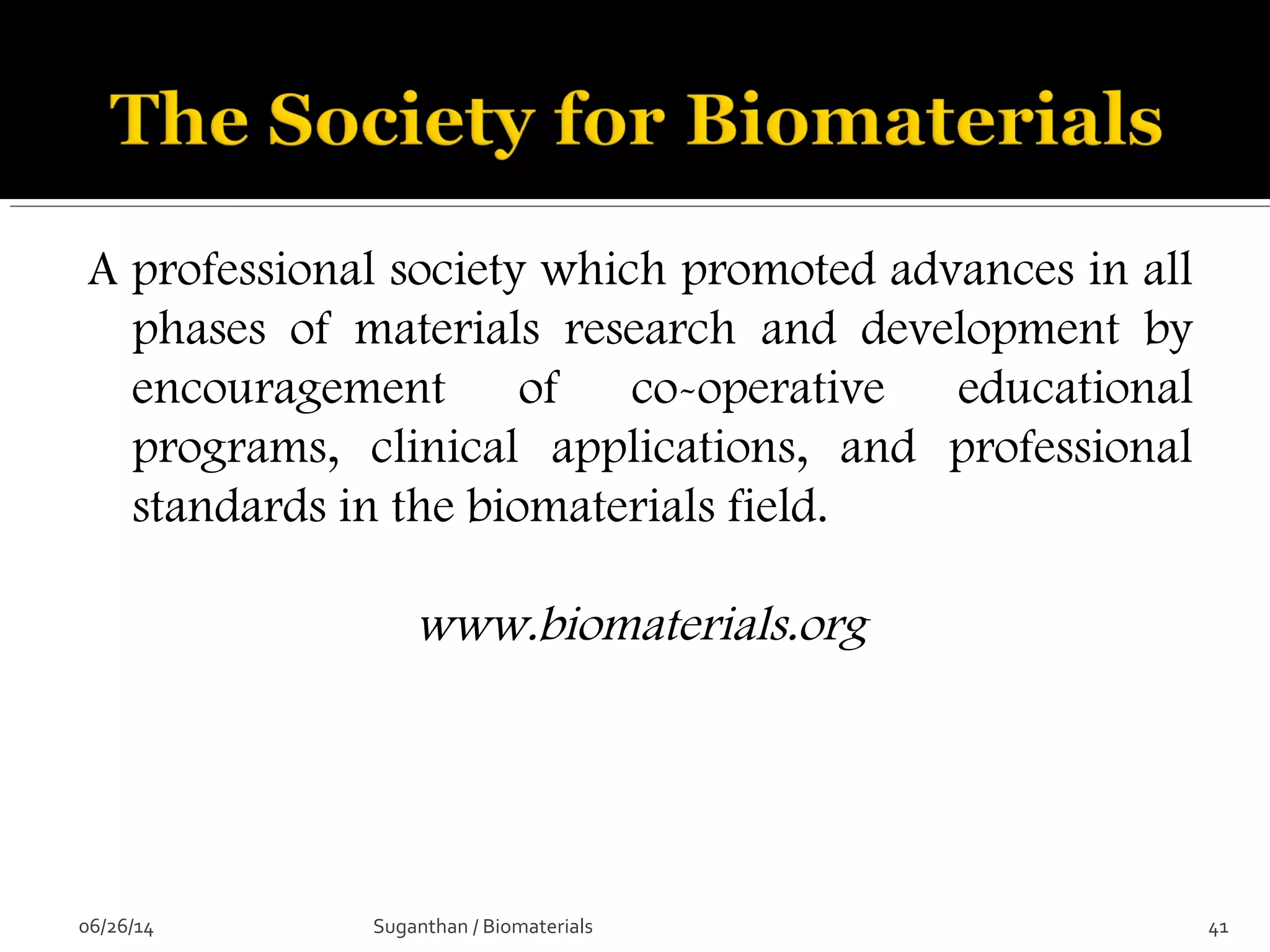
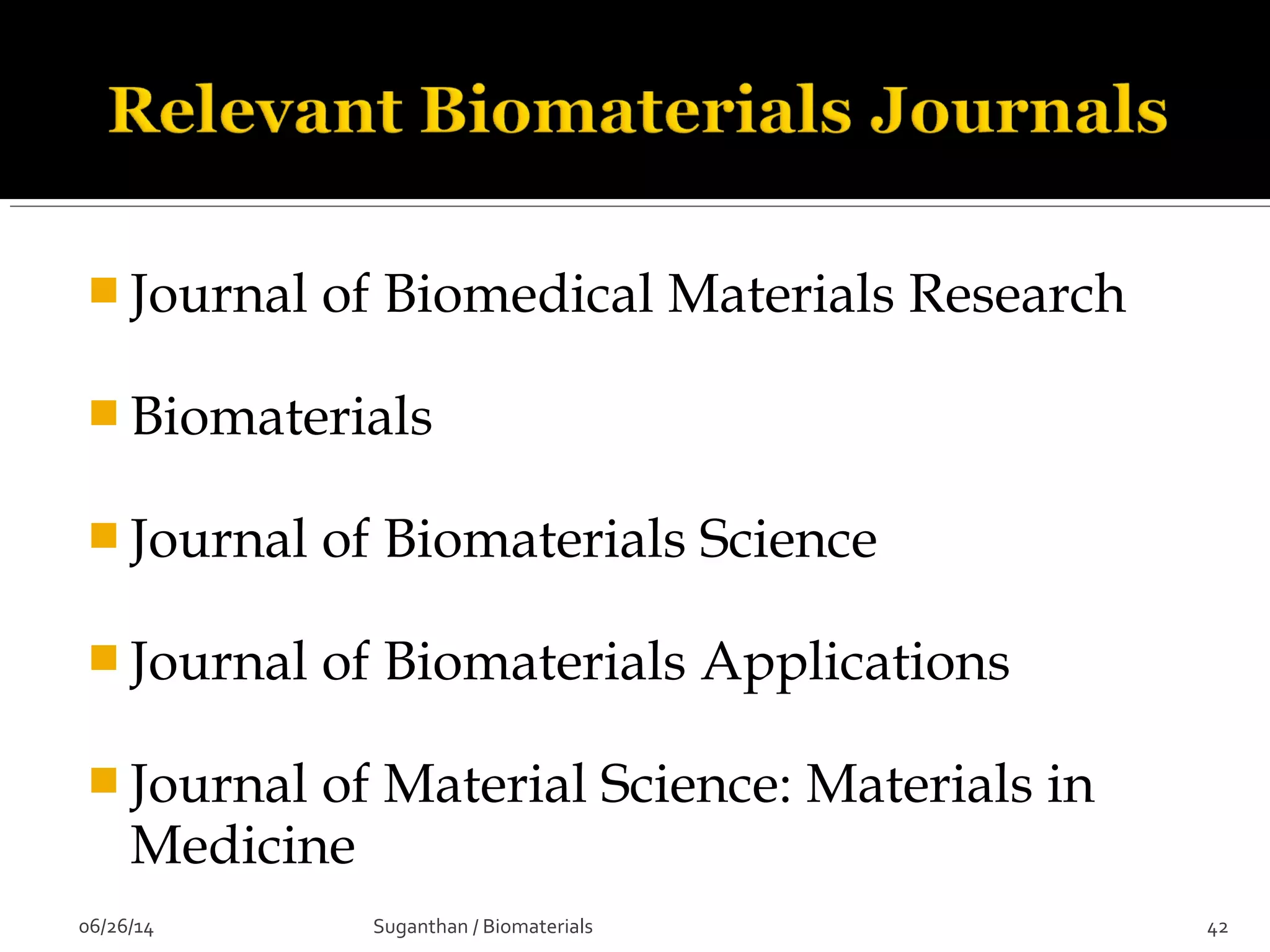

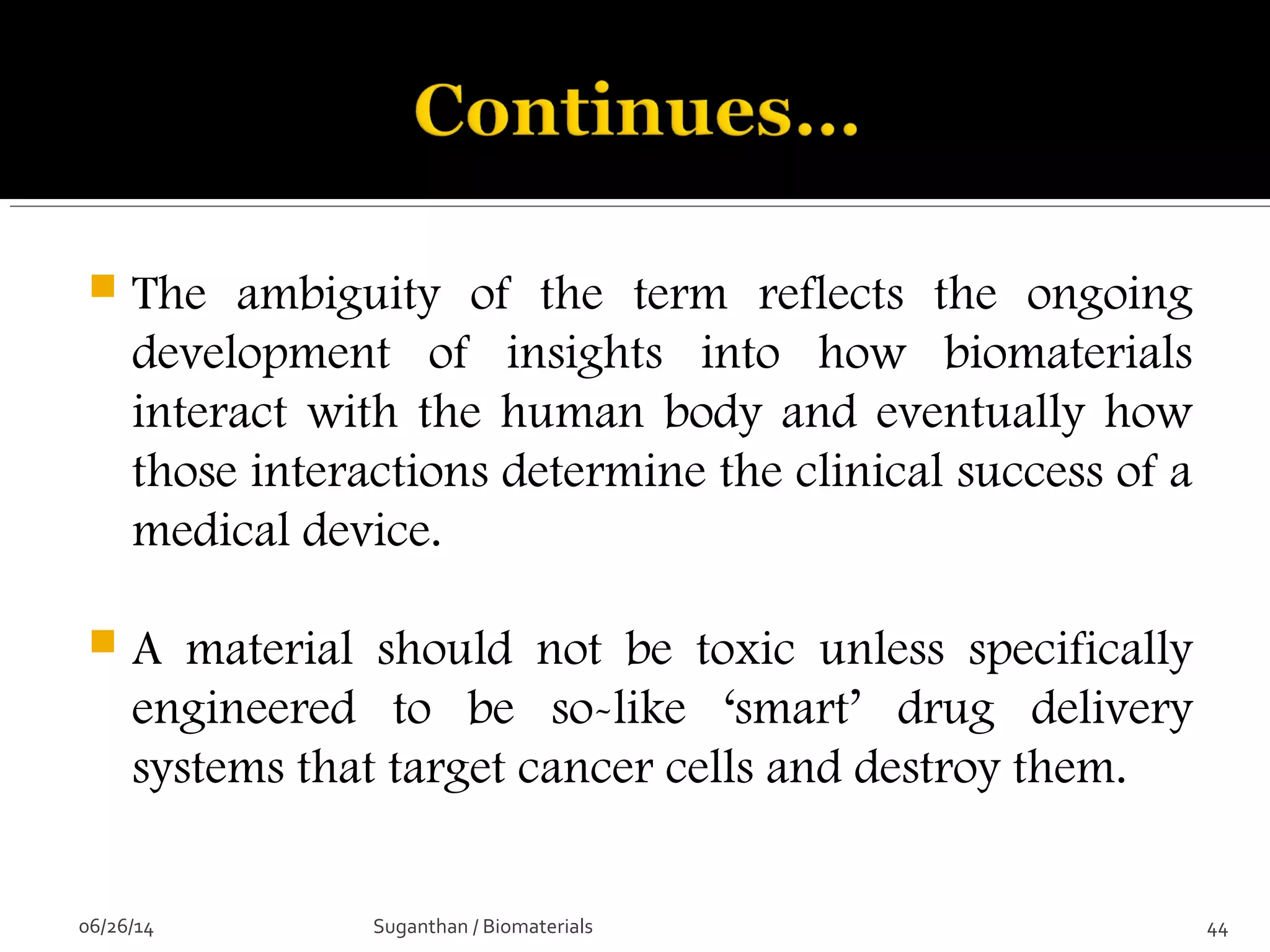
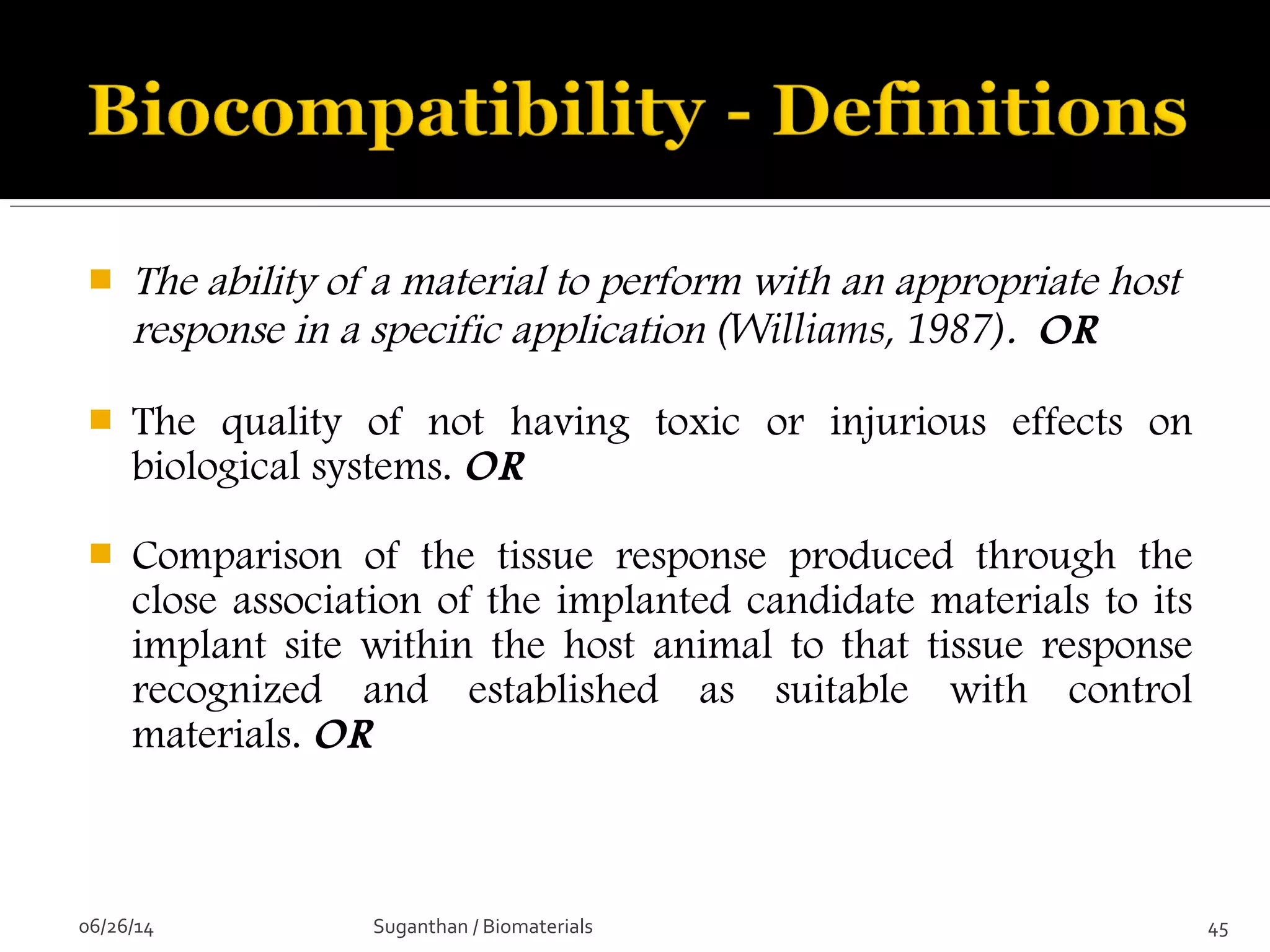

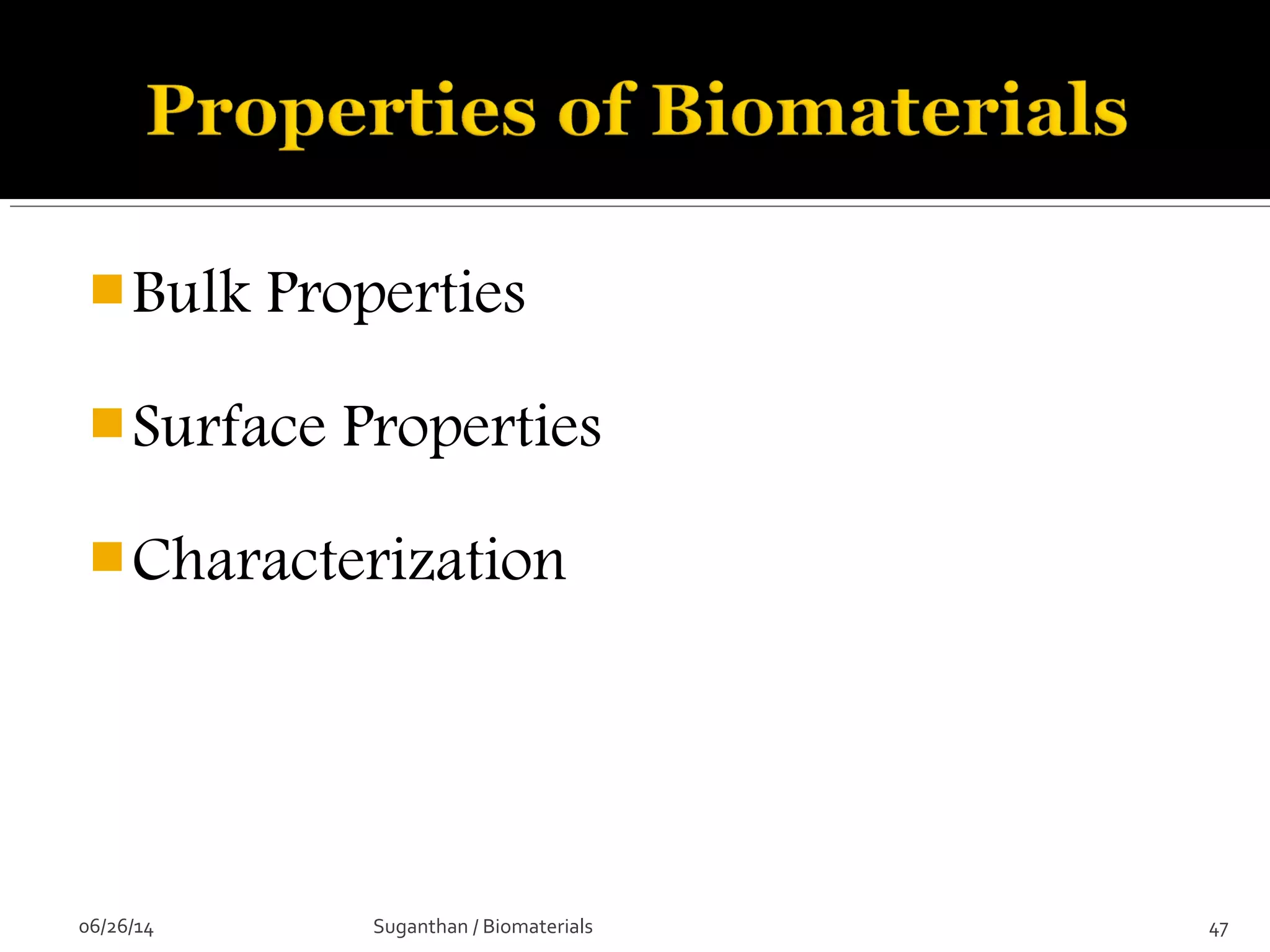
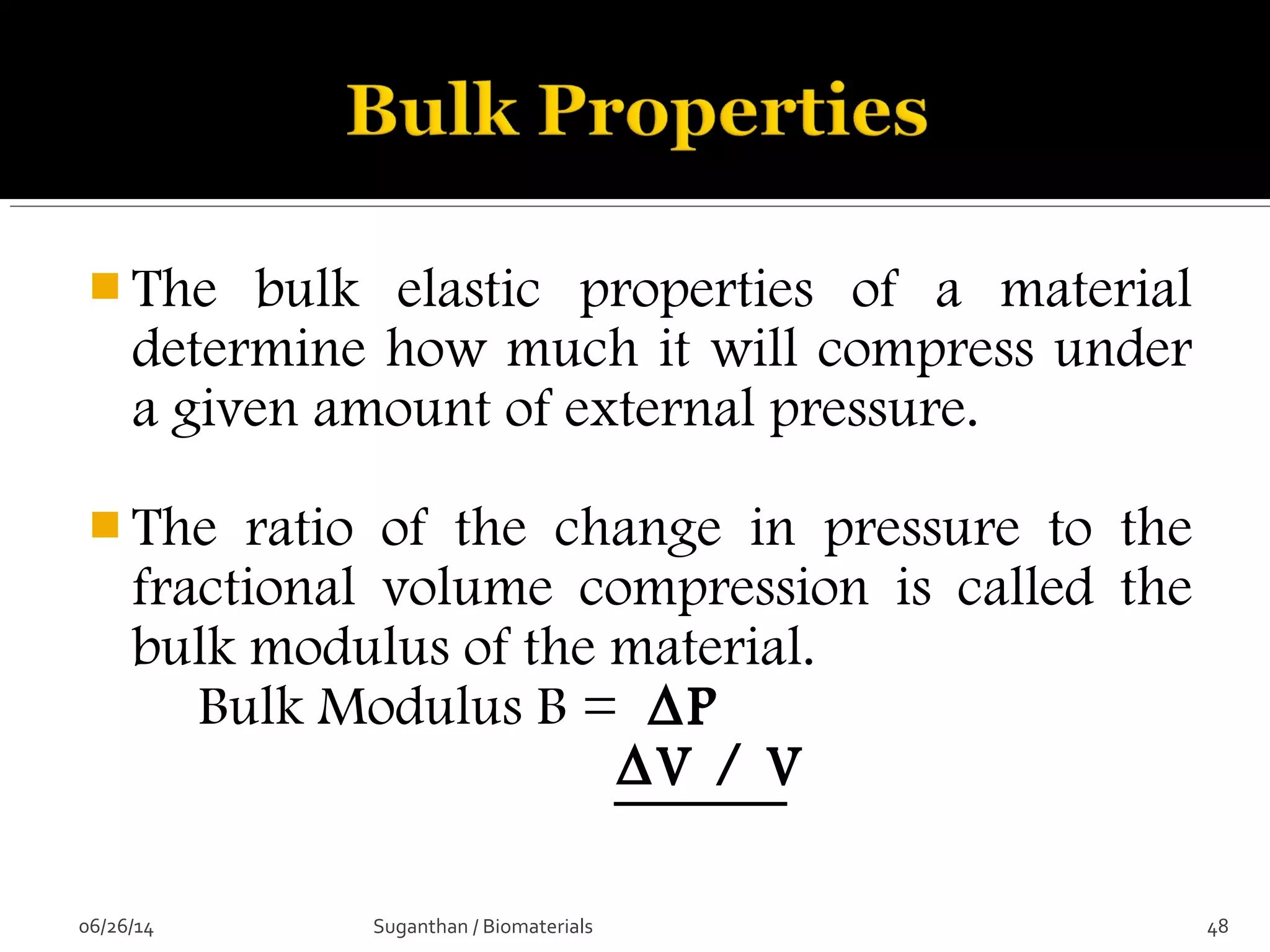
![ These are the most important property that a
biomaterial possesses.
This is due to the fact that, when a device is
implanted to tissues, the surface chemistry will be
determined, how the material [or] the surrounding
fluid interact.
The surface of metal implant corrode inside the
system liberating the metallic ions into the solution.
06/26/14 49Suganthan / Biomaterials](https://image.slidesharecdn.com/biomaterialsanoverview-140626100833-phpapp01/75/Biomaterials-an-overview-49-2048.jpg)
